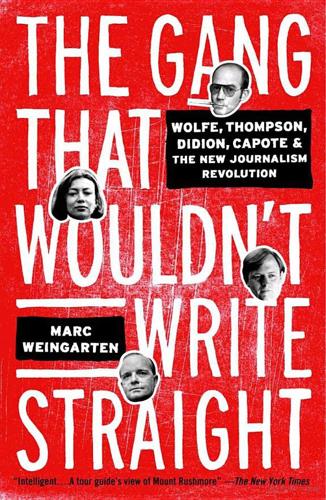
The Gang That Wouldn't Write Straight: Wolfe, Thompson, Didion, Capote, and the New Journalism Revolution
by
Marc Weingarten
Published 12 Dec 2006
“As I began to calm down, I had the feeling that I had entered into the sheen of this nubby twist carpet—a really wretched carpet, made of Acrilan—and somehow this represented the people of America, in their democratic glory.” Fortunately for Wolfe, such specious insights didn’t make it into The Electric Kool-Aid Acid Test. The reviews of the book, which was published in August 1968 on the same day as his second collection of articles, The Pump House Gang, were far more enthusiastic than the notices for The Kandy-Kolored Tangerine-Flake Streamline Baby. “The Electric Kool-Aid Acid Test is an astonishing book,” wrote C. D. B. Bryan in the New York Times Book Review. “Wolfe is precisely the right author to chronicle the transformation of Ken Kesey from respected author of ‘And One Flew Over the Cuckoo’s Nest’ [sic] to an LSD enthusiast….
…
Thompson, Hell’s Angels: A Strange and Terrible Saga (New York: Modern Library, 1999), 220. Certain vibrations of the bus: Wolfe, The Electric Kool-Aid Acid Test, 110. A very Christmas card: Ibid., 55. Miles, Miles, Miles: Ibid., 47. [S]ome blonde from out of town: Ibid., 176. “Certain passages—such as the Hell’s Angels gangbang”: From an interview sent to the author from Paul Krassner, used with Krassner’s permission. “The ceiling is moving”: Wolfe, The Electric Kool-Aid Acid Test, 40. Wolfe would revert to a“controlled trance”;“I felt like my heart”: Toby Thompson, “The Evolution of Dandy Tom,”Vanity Fair, October 1987 5.
…
Not a movement in the Kerouac-Ginsberg-Corso sense or in the Abstract Expressionist sense. Many of these writers were cordial with each other, but they didn’t share apartments or sex partners. But consider the fact that most of the books and articles discussed in this book were all written within seven years of each other. Not just any stories, either, but The Electric Kool-Aid Acid Test, Fear and Loathing in Las Vegas, Slouching Towards Bethlehem, Dispatches—some of the greatest journalism of the twentieth century, stories that changed the way their readers viewed the world. It was an unprecedented outpouring of creative nonfiction, the greatest literary movement since the American fiction renaissance of the 1920s.

Whole Earth: The Many Lives of Stewart Brand
by
John Markoff
Published 22 Mar 2022
He has displayed an eerie knack for showing up first at the onset of some social movement or technological inflection point and then moving on just when everyone else catches up. He has retained a remarkable aversion to orthodoxy, which has on occasion made him the target for criticism from the right, and sometimes from the left. Brand first made a cameo in the opening pages of Tom Wolfe’s The Electric Kool-Aid Acid Test. Since then almost two dozen books have sought to document Brand’s contribution to politics and culture. In each instance some aspect of his life has been used to make a particular point, whether the point related to Native American politics, environmentalism, innovation, architecture, computer networks, social media, or personal computing.
…
She watched a tall, thin blond man get out of the bus, struck immediately with how serious he seemed, that he was clearly on a mission. The next thing she noticed was that his van was full of books—in fact, it was like some kind of 1960s bookmobile. Kesey’s band of Merry Pranksters, which would later be immortalized in Tom Wolfe’s The Electric Kool-Aid Acid Test, was just starting to form. An eclectic mix of outsiders, poets, journalists, and camp followers would come out to see Kesey in the redwoods to hang out, get stoned, and play. In Ostwind’s eyes Brand was different. He came across as “quiet, self-contained, and intense.” She was immediately attracted to him and they would soon begin dating.
…
He also met a young Indian woman there, Lois Jennings, a half-Ottawa mathematician employed by the Office of Naval Research who was working at the registration desk when he arrived. Her mother, who was active in Indian politics, had persuaded her to attend during her summer vacation. Short and bespectacled, she had raven hair and what Tom Wolfe would later describe in The Electric Kool-Aid Acid Test as a radiant smile. Jennings was in many ways the perfect “Indian maiden,” as Brand would later describe her. She was also a genuine “hidden figure,” the description for the women who did mathematical calculations by hand who were essential for the early space program. The daughter of a federal government economist, with a brother who would become a nuclear physicist at MIT, Jennings had majored in math in college, even taking an introductory course in programming high-speed computers.
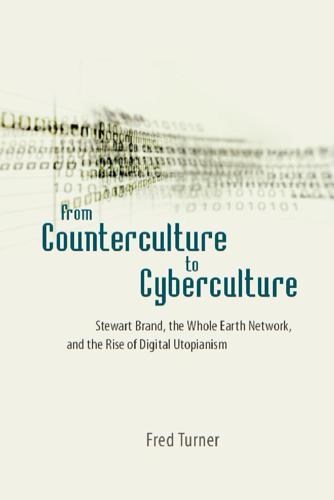
From Counterculture to Cyberculture: Stewart Brand, the Whole Earth Network, and the Rise of Digital Utopianism
by
Fred Turner
Published 31 Aug 2006
Ken Kesey, “A Successful Dope Fiend,” 4. 39. Brand, “Notebooks,” December 18, 1962. 40. Wolfe, Electric Kool-Aid Acid Test, 13. 41. Lardas, Bop Apocalypse, 4. 42. Ginsberg quoted in Lardas, Bop Apocalypse, 10, 92 –93; Ginsberg, “New Consciousness.” 43. In this regard, as Daniel Belgrad has pointed out, they were part of a much larger move to embrace an aesthetic of “spontaneity” across the American art world. See Belgrad, Culture of Spontaneity, 196 –221. 44. Stewart Brand, interview, July 17, 2001. 45. Wolfe, Electric Kool-Aid Acid Test, 195. 46. Ibid., 222. 47. Ibid., 138, quotations on 127. 48. Ibid., 230 – 49. 49.
…
Within a year, Kesey had put together a new scene, with Page Browning and Gurney Norman remaining from the original Perry Lane crew, and in the fall of 1964 he and the Pranksters painted up an old school bus and drove east on [ 62 ] Chapter 2 the first leg of the legendary tour chronicled in Tom Wolfe’s The Electric Kool-Aid Acid Test. Brand did not go with them. As Wolfe put it, Brand represented “the restrained, reflective wing of the Merry Pranksters.”40 Even so, to Brand the Pranksters were a West Coast version of USCO’s techno-tribalism. If USCO had emerged out of an East Coast engagement with cold war avant-garde art, the Pranksters drew on the bohemian energy of San Francisco’s Beatnik scene.
…
[ 220 ] Chapter 7 In Quittner’s article, the global Net also called to mind the local network of relationships in which the leaders of the EFF found themselves enmeshed. Quittner organized the piece around several miniature portraits of key EFF people. At each stage, he carefully emphasized their extraordinary mobility, their access to people in power, and their material success. In The Electric Kool-Aid Acid Test, Tom Wolfe took readers inside the garage where the Merry Pranksters painted their psychedelic bus. Quittner here took readers inside San Francisco’s Bistro Rôti—“a cozily upscale place overlooking the bay . . . woodburning stove . . . valet parking . . . white Jaguar in front . . .”—for the EFF’s quarterly board meeting.
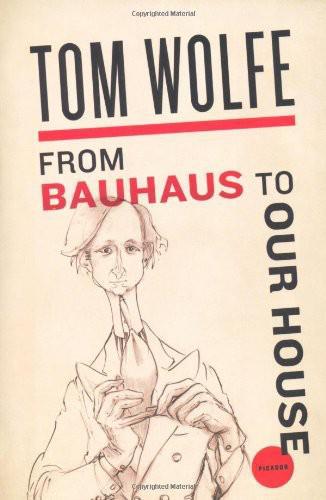
From Bauhaus to Our House
by
Tom Wolfe
Published 2 Jan 1981
Also by Tom Wolfe The Kandy-Kolored Tangerine-Flake Streamline Baby The Pump House Gang The Painted Word The Electric Kool-Aid Acid Test Radical Chic & Mau-Mauing the Flak Catchers Mauve Gloves & Madmen, Clutter & Vine The Right Stuff In Our Time The Bonfire of the Vanities A Man in Full Hooking Up I Am Charlotte Simmons Tom Wolfe is the author of a dozen books, among them such contemporary classics as The Electric Kool-Aid Acid Test, The Bonfire of the Vanities, I Am Charlotte Simmons, and Radical Chic & Mau-Mauing the Flak Catchers. He lives in New York City.
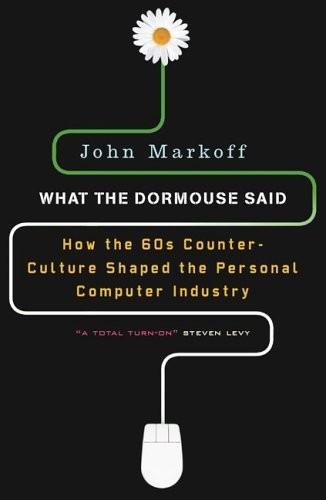
What the Dormouse Said: How the Sixties Counterculture Shaped the Personal Computer Industry
by
John Markoff
Published 1 Jan 2005
It was the mid-sixties, and the outside world was both closing in and coming asunder in ways that shook the very foundations of American society. Engelbart’s project was to become a casualty of the chaos. It wasn’t until 1968 that Stewart Brand and Jim Fadiman made a very public appearance together, in a cameo in the opening pages of Tom Wolfe’s The Electric Kool-Aid Acid Test. Brand is introduced as the “enamorado” of a half-Ottawa Native American, Lois Jennings, as the two bounce along in a truck Brand is driving through the San Francisco hills as they wait for Ken Kesey to get out of jail. Fadiman is described as the nephew of Clifton Fadiman, the writer and editor who was known for the encyclopedic knowledge he displayed on the Information Please radio programs of the 1930s and 1940s.
…
Dave Evans was one of the Augment team members who had strong ties to the counterculture, and one evening Stewart Brand brought Ken Kesey by for a look at the NLS system. It was several years after the Merry Prankster era and Kesey’s legal problems over a marijuana arrest, and he had become a celebrity as a result of the publication of Tom Wolfe’s The Electric Kool-Aid Acid Test, in which he was the main character. He was quarreling with Hollywood movie studios over the film based on his novel Sometimes a Great Notion and was preparing to retreat to a dairy farm in Oregon. For an hour, Evans took the system through its paces, showing the writer how it was possible to manipulate text, retrieve information, and collaborate with others.
…
.: And/Or Press, 1982. Waldrop, M. Mitchell. The Dream Machine: J.C.R. Licklider and the Revolution That Made Computing Personal. New York: Viking, 2001. Wayner, Peter. Free for All: How Linux and the Free Software Movement Undercut the High-Tech Titans. New York: Harper Business, 2000. Wolfe, Tom. The Electric Kool-Aid Acid Test. New York: Farrar, Straus and Giroux, 1968. Zachary, G. Pascal. Endless Frontier: Vannevar Bush, Engineer of the American Century. New York: Free Press, 1997. INDEX Adobe Systems Air Force, U.S. Albrecht, Bob est and folk dancing of Homebrew and Moore and Aldus Manutius algorithms Allen, Don Allen, Mary Allen, Paul Allison, Dennis Alpert, Richard Altair Alternatives conference Alto American Documentation Institute Ames Research Laboratory Ampex LSD and Andrews, Don Andrews, Paul antiwar activism Augment lab and Brand and Diffie and draft resistance Duvall and Felsenstein and militancy in Moore and Stanford and Apple Computer Alto and ARPA (Advanced Research Projects Agency) Augment funded by Augment funding terminated by SAIL funded by ARPAnet e-commerce on expansion of file-sharing in launch of Network Information Center (NIC) packet switching and Super AI computer for artificial intelligence (AI) golden years of McCarthy and; see also McCarthy, John modeling human intelligence and superbrain and Turing test and see also Stanford Artificial Intelligence Laboratory Art of Computer Programming, The (Knuth) ASCII AT&T Atari Atlantic Monthly augmentation complexity in Augmentation Research Center (Augmented Human Intellect Research Center) antiwar viewpoint and ARPAnet launch and ARPA’s funding of ARPA’s termination of funding of business manager hired at counterculture and departures from division of Engelbart’s Brooks Hall demonstration Engelbart’s loss of control of est and Fadiman and growth of hippie vibe at Kay at Moore and name change of NLS in, see NLS refashioning of SAIL and social experimentation at teenagers at text editing and Tymshare purchase of Xerox and Baer, Steve Baez, Joan Bakalinsky, Eric Bank of America Barringer, Felicity BASIC “borrowed” copy of Interaccess Tiny Bass, Walter Bates, Roger Baum, Allen Beach, Scott Beautiful Mind, A (Nasar) be-ins Bell, Gordon Bell Laboratories Bender, Dorothy Bennion, Dave Berkeley, Calif.
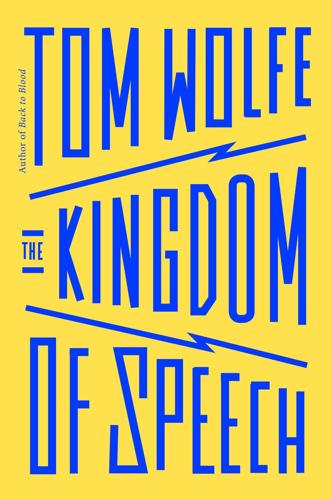
The Kingdom of Speech
by
Tom Wolfe
Published 30 Aug 2016
About the Author Tom Wolfe is the author of more than a dozen books, among them The Electric Kool-Aid Acid Test, The Right Stuff, The Bonfire of the Vanities, A Man in Full, I Am Charlotte Simmons, and Back to Blood. A native of Richmond, Virginia, he earned his BA at Washington and Lee University and a PhD in American Studies at Yale. He received the National Book Foundation’s 2010 Medal for Distinguished Contribution to American Letters. He lives in New York City. Also by Tom Wolfe The Kandy-Kolored Tangerine-Flake Streamline Baby The Pump House Gang The Electric Kool-Aid Acid Test Radical Chic & Mau-Mauing the Flak Catchers The Painted Word Mauve Gloves & Madmen, Clutter & Vine The Right Stuff In Our Time From Bauhaus to Our House The Purple Decades The Bonfire of the Vanities A Man in Full Hooking Up I Am Charlotte Simmons Back to Blood Thank you for buying this ebook, published by Hachette Digital.

Stealing Fire: How Silicon Valley, the Navy SEALs, and Maverick Scientists Are Revolutionizing the Way We Live and Work
by
Steven Kotler
and
Jamie Wheal
Published 21 Feb 2017
When we came back out [of the sessions], they took one look at us and said, ‘Whatever they do, don’t let them go back in that room!’” Over on Perry Lane, the bohemian cottage enclave where he lived, Kesey and his growing band of pranksters took things out of the lab and into the field. “Volunteer Kesey gave himself over to science21 at the Menlo Park vets hospital,” Tom Wolfe recounts in The Electric Kool-Aid Acid Test, “and somehow drugs were getting up and walking out of there and over to Perry Lane.” “Half the time,” Wolfe continues, “Perry Lane would be like some kind of college fraternity row22 with everybody out on a nice autumn Saturday afternoon on the grass . . . playing touch football . . . an hour later Kesey and his circle would be hooking down something that in the entire world only they and a few other avant-garde neuropharmacological researchers even knew about.”
…
Benson, Wallace Stegner: His Life and Work (Lincoln: University of Nebraska Press, 1996), p. 253. 20. “The scientists didn’t have the guts”: Joshua Fried, “What a Trip,” Stanford Alumni Magazine, January/February 2002. 21. “Volunteer Kesey gave himself over to science”: Tom Wolfe, The Electric Kool-Aid Acid Test (New York: Farrar, Straus & Giroux, 1968), p. 45. 22. Half the time”: Ibid., p. 46; Richard Strozzi-Heckler, In Search of the Warrior Spirit: Teaching Awareness Disciplines to the Green Berets (Berkeley: Blue Snake Books, 2007), p. 17. 23. Armed with speakers mounted in the redwoods: John Markoff, What the Doormouse Said (New York: Viking, 2005), p. 122. 24.
…
See Tolle, Eckhart economy “experience,” 195 “transformation,” 195–96, 197 See also Altered States Economy; costs ecstasis advances in understanding of, 153 beginning of, 44 case for, 7–69 definition of, 23, 67 in everyday lives, 174–78 four forces of, 71 and “I” replaced be “we,” 68 as information technology, 46 “legitimately earned,” 59 as long-term practice, 214 misuse/dangers of, 181–200 onset of, 136 open-sourcing of, 128–29, 184–85, 187, 200 Plato’s views about, 11 Silva as ambassador of, 33–36 as solving wicked problems, 50, 158–79 and stealing kykeon, 5 as “stepping beyond oneself,” 11 as “sufficiently advanced technology,” 22 as teacher, 217 unconsciousness as alternative of, 7 user manual for, 201–18 validation of, 93 what is, 9–32 and why it matters, 33–50 and why we missed it, 51–69 See also specific force or topic Ecstasis Equation, 209–16 ecstasy and Pale of the State, 61–62 purposes for use of, 54 Shulgin development of, 121 traditional techniques of, 57, 69 Ecstatic Kabbalah, 109 Edwards, Trevor, 170 EEG technology, 26, 104, 194, 197 effortlessness benefits of, 42 “known issues”/downsides of, 193, 205–6 and learning, 220 and open-sourcing ecstasis, 200 as STER category, 41–43, 45 Tolle and, 76 and training for nonordinary states, 205–6 See also STER ego death of, 67 disintegration of, 126 inflation of, 202–3, 208 and music, 142 and neurobiology, 111, 113, 114 and psychedelics, 124, 126 repurposing of, 201–2 Einstein, Albert, 98 Eipmetheus, 221, 222 The Electric Kool-Aid Acid Test (Wolfe), 189 electronic dance music (EDM), 30, 67, 85 electronic festivals, 142 Eleusinian Mysteries, 2–3, 168 Eleusis, 3, 19, 155 Eliade, Mircea, 57 elites: spreading of ecstatic culture by, 165–74 Ellie (AI), 100–102, 104 Ellison, Larry, 219–20 embodied/disembodied cognition, 97, 98, 99, 100, 101, 111, 152, 175 “emergent” leadership, 105–6 emotions and neurobiology, 97, 100–102 See also specific emotion empathy, 96, 97, 152, 193, 198 Empire State Building: Jones art at, 143, 144 “End of the Line” experience, 131 end of the world feeling, 204 endorphins, 20–21, 24, 42, 45, 85, 141, 217 enlightenment engineering, 146–48 entertainment and Altered States Economy, 30 See also type of entertainment entrepreneurs, 171, 172, 174, 204 Equinox Gyms, 195 Erhard, Werner, 79–80, 81 Erowid.
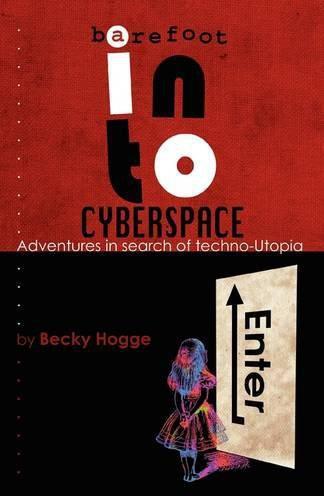
Barefoot Into Cyberspace: Adventures in Search of Techno-Utopia
by
Becky Hogge
,
Damien Morris
and
Christopher Scally
Published 26 Jul 2011
When I was 19, Ken Kesey came to my home town, Brighton, along with a reproduction of Furthur, the psychedelic school bus he and the Merry Pranksters first drove around the US in the late sixties on one long trip funded by the proceeds of selling Kesey’s film rights for One Flew Over the Cuckoo’s Nest. It was that journey that Tom Wolfe immortalised in The Electric Kool-Aid Acid Test. Thirty years later in 1999, some of the original Merry Pranksters came with him to the Peace Statue on Brighton Beach – the electrical whizz kid Babbs, Mountain Girl – but Brand, the man sitting in front of me now, who travelled in Kesey’s inner circle in the sixties, was not among them.
…
Turner, Fred. 2006. From Counterculture to Cyberculture: Stewart Brand, the Whole Earth Network, and the Rise of Digital Utopianism. United States: The University of Chicago Press. WikiLeaks. 2010. Collateral Murder. April 5. http://www.collateralmurder.com/. Wolfe, Tom. 1989. The Electric Kool-Aid Acid Test. Great Britan: Black Swan. York, Jillian. 2010. Policing Content in the Quasi-Public Sphere. Bulletin. September 21. http://opennet.net/policing-content-quasi-public-sphere. Zemeckis, Robert. 1985. Back to the Future. Zuckerman, Ethan. New Berkman Paper on DDoS – silencing speech is easy, protecting it is hard.

The Innovators: How a Group of Inventors, Hackers, Geniuses and Geeks Created the Digital Revolution
by
Walter Isaacson
Published 6 Oct 2014
The next night was kicked off by Kesey, who had been busted for drugs a few days earlier on Brand’s North Beach roof but was out on bail and orchestrating the event from a command scaffold. Featured were the Merry Pranksters and their Psychedelic Symphony, Big Brother and the Holding Company, the Grateful Dead, and members of the Hells Angels motorcycle gang. The writer Tom Wolfe tried to recapture the technodelic essence in his seminal work of New Journalism, The Electric Kool-Aid Acid Test: Lights and movies sweeping around the hall; five movie projectors going and God knows how many light machines, interferrometrics, the intergalactic science-fiction seas all over the walls, loudspeakers studding the hall all the way around like flaming chandeliers, strobes exploding, black lights with Day-Glo objects under them and Day-Glo paint to play with, street lights at every entrance flashing red and yellow, and a troop of weird girls in leotards, leaping around the edges blowing dog whistles.
…
Brand’s succession of ventures, including the Whole Earth Catalog, were based just a few blocks from Engelbart’s Augmentation Research Center. Thus it was natural that they team up for a demonstration in December 1968 of Engelbart’s oNLine System. Thanks to Brand’s instincts as an impresario, the demo, which later became known as the Mother of All Demos, became a multimedia extravaganza, like an Electric Kool-Aid Acid Test on silicon. The event turned out to be the ultimate melding of hippie and hacker culture, and it has remained unchallenged, even by Apple product launches, as the most dazzling and influential technology demonstration of the digital age.39 The year had been turbulent. In 1968 the Tet Offensive turned America against the Vietnam War, Robert Kennedy and Martin Luther King were assassinated, and Lyndon Johnson announced he would not seek reelection.
…
The headline of the story from the conference in the next day’s San Francisco Chronicle was “Fantastic World of Tomorrow’s Computer.” It was about Engelbart’s oNLine System, not about the robot.42 As if to seal the marriage of the counterculture and cyberculture, Brand brought Ken Kesey to Engelbart’s lab to experience the oNLine System. Kesey, by then famous from Tom Wolfe’s The Electric Kool-Aid Acid Test, got a full tour of how the system could cut, paste, retrieve, and collaboratively create books and other documents. He was impressed. “It’s the next thing after acid,” Kesey pronounced.43 ALAN KAY Alan Kay struggled to make sure that he got to Engelbart’s Mother of All Demos. He had a 102-degree fever and strep throat, but he was able to drag himself onto a plane from Utah, where he was a graduate student.
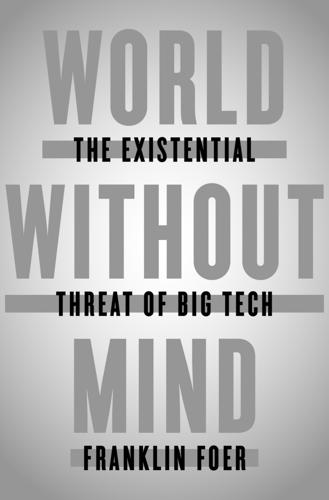
World Without Mind: The Existential Threat of Big Tech
by
Franklin Foer
Published 31 Aug 2017
Brand was the master of the uptight, straitlaced tasks that flummoxed most of his long-haired friends—renting a hall, publicizing an event. When he linked up with the writer Ken Kesey and his storied posse of drug-dabbling Merry Pranksters, he represented the “restrained, reflective wing” of that Day-Glo band of hipsters, at least in The Electric Kool-Aid Acid Test, Tom Wolfe’s travelogue through the emerging counterculture. Though Brand wore a top hat with a flower, and he spoke in impish aphorisms, he remained a neatnik with a filing cabinet. His pièce de résistance was organizing the Trips Festival, the greatest of the Acid Test parties that Kesey’s crew hosted in San Francisco to celebrate their favorite drug.
…
This book ends on an optimistic note, because I have Theo and Sadie, naturally born idealists and the best company. With all my heart, thanks to my wife, Abby. She has supplied me with the love, encouragement, and wisdom to make it all the way through the challenges of writing and life. Notes CHAPTER ONE: THE VALLEY IS WHOLE, THE WORLD IS ONE as an “Indian freak”: Tom Wolfe, The Electric Kool-Aid Acid Test (Farrar, Straus & Giroux, 1968), 2, 11. child of an advertising executive: For biographical details about Brand, I leaned heavily on three excellent books: Fred Turner, From Counterculture to Cyberculture (University of Chicago Press, 2006); John Markoff, What the Dormouse Said (Viking Penguin, 2005); Walter Isaacson, The Innovators (Simon & Schuster, 2014).
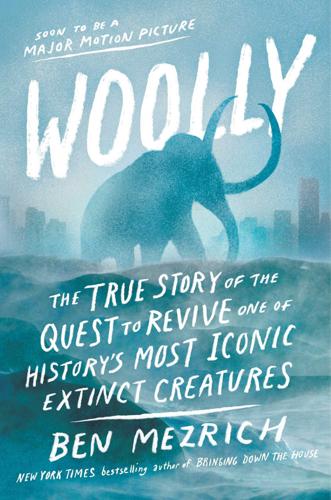
Woolly: The True Story of the Quest to Revive History's Most Iconic Extinct Creature
by
Ben Mezrich
Published 3 Jul 2017
In the late sixties, as the creator and publisher of the Whole Earth Catalogue, Brand had become a guide for those looking to live in harmony with the environment. He had blazed a countercultural trail that had inspired Church’s entire generation. One of Ken Kesey’s original Merry Pranksters, who were written about by Tom Wolfe in his book The Electric Kool-Aid Acid Test, Brand had been a proponent of the use of LSD—the “turn on, tune in, drop out” movement. In fact, the Whole Earth Catalogue had actually grown out of an acid trip. After a particularly lucid experience in 1968, Brand had decided to sell buttons inquiring, “Why haven’t we seen a picture of the whole Earth yet?”
…
–Canadian border, 133–42 education of, 134, 137–39, 145 family of, 135, 137, 141 immortalizing elephant cells and, 199–202, 205, 223 and implanting Mammoth genetic material into elephant cells, 162, 223, 226, 240, 242–43, 246–47 Mammoth team and, 145, 147–48, 152, 154, 159–63, 175, 188, 197–98, 201, 205, 223, 226, 242–43, 246–47 research on aging of, 136–39, 141–42, 198–99, 243 synthesizing stem cells and, 205, 223 wife of, 134–42, 145, 198 Yang’s relationship with, 141–42 dinosaurs, 42, 156 DNA of, 78, 80, 261–63 resurrection of, 78, 80 Disney Pavilion, 43 DNA, 127–28, 210, 219–20, 244, 271 ancient, 78, 80, 172, 261–63, 265–66 body size traits and, 259 Cas 9 protein and, 152–53 chemical building blocks of, 51, 53, 152 Church and, 17–19, 47, 50, 55, 59, 94, 109–10, 139, 221, 230, 261–66 cloning and, 191, 216 CRISPR and, 193, 231 Dhadwar and, 136–37, 152 double helix structure of, 47, 51, 152 editing of, 18, 109–10, 193, 264–65 fruit fly genetics and, 62 HGP and, 54 immortalizing cells and, 199 and implanting Mammoth genetic material into elephant cells, 162, 172, 174–75, 190, 246 Mammoths’ genetic traits and, 150 Minh’s Mammoth specimen and, 185 passenger pigeons and, 94 and proposed resurrection of Mammoths, 79–80, 110 sequencing of, 17, 50, 54–55, 74, 78, 94, 148 synthesizing stem cells and, 200–201 transplantation medicine and, 124 DNA Direct, 91–92 dogs, 222, 266–67 cloning of, 183, 215–17, 219, 224 Dolly the sheep, 109, 184 dragonflies, 26 Duke University, 47–50, 73, 225 E E. coli, 165, 168, 237–38, 244 Electric Kool-Aid Acid Test, The (Wolfe), 89 Elements Café, 143–45, 154, 156, 159, 161 elephants, 145, 261 acquiring stem cells of, 162–63, 167–68, 173, 189, 194 acquiring tissue of, 155–56, 158–62 African, 79, 84, 158–61, 206–7 Asian, 79, 84, 160–62, 166–69, 172, 205–11, 224, 226, 242, 262–63, 266–67, 269–70 Church’s childhood and, 95 Church’s visit with herd of, 204–9, 211, 223 in circuses, 205–7 comparisons between Mammoths and, 77, 79, 84–85, 147 complex and emotional lives of, 210–11 fetal GMO, 267 genome of, 154, 262, 264–67 gestation period of, 163, 259, 270 giving birth, 166–69 hemoglobin and, 262–63 herpes in, 211–12, 223–24 immortalizing cells of, 199–202, 205, 212, 223, 240, 242 implanting Mammoth genetic material into cells of, 110, 150–51, 153–54, 162–63, 172–75, 190–91, 223–24, 226, 240, 242–43, 246–48 ivory tusks of, 84–85, 211 placentas of, 162–63, 167–70, 173–74, 194 and proposed resurrection of Mammoths, 79–80 rareness of cancer in, 173, 194, 209–10, 259 during rutting season, 208 sequencing of, 189–90 sizes of, 258–59 synthetic uterus and, 226–27 temperaments of, 159–60, 168–69, 206–9 Zimov’s manifesto and, 118 elk, 101–5, 114–15, 251 Energy Department, U.S.

The Electric Kool-Aid Acid Test
by
Tom Wolfe
Published 1 Jan 1968
The Electric Kool-Aid Acid Test Chapter I Black Shiny FBI Shoes THAT'S GOOD THINKING THERE, COOL BREEZE, COOL BREEZE is a kid with three or four days' beard sitting next to me on the stamped metal bottom of the open back part of a pickup truck. Bouncing along. Dipping and rising and rolling on these rotten springs like a boat. Out the back of the truck the city of San Francisco is bouncing down the hill, all those endless staggers of bay windows, slums with a view, bouncing and streaming down the hill. One after another, electric signs with neon martini glasses lit up on them, the San Francisco symbol of "bar"—thousands of neon-magenta martini glasses bouncing and streaming down the hill, and beneath them hundreds, thousands of people wheeling around to look at this freaking crazed truck we're in, their white faces erupting from their lapels like marshmallows—streaming and bouncing down the hill—and God knows they've got plenty to look at.
…
I drive hundreds of miles looking for my particular cliff, get so trapped behind acid I can't find the ocean, end up slamming into a redwood ..." Beautiful. Ready, Ron? He gets into Boise's truck and they head off south for San Diego, the Mexican border, Tijuana and the land of all competent Outlaws. chapter XX The Electric Kool-Aid Acid Test WHAT HAPPENED TO THE PRANKSTERS AFTER KESEY'S flight to Mexico was so much like what happened to the League after Leo fled in Hermann Hesse's book The Journey to the East—well, it was freaking weird, this particular synch ... exactly ... the Pranksters ! and the great bus trip of 1964!
…
Of the many other people I talked to or corresponded with, I particularly want to mention Vic Lovell, Paul Sawyer, Paul Krassner, Pat Hallinan, Brian Rohan, Paul Robertson, Jerry Garcia, Gary Goldhill, Michael Bowen, Anne Severson, Paul Hawken, Bill Tara, Michael Laton, Jack the Fluke, Bill Graham, John Bartholomew Tucker, Roger Grimsby, Marshall Efron, Robin White, Larry McMurtry, Larry Schiller, Donovan Bess, Carl Lehmann-Haupt, and Mr. and Mrs. Fred Kesey. About the Author TOM WOLFE is the author of a dozen books, among them such contemporary classics as The Electric Kool-Aid Acid Test, The Right Stuff, The Bonfire of the Vanities, and A Man in Full. A native of Richmond, Virginia, he earned his B.A. at Washington and Lee University and a Ph.D. in American studies at Yale. He lives in New York City.

Surveillance Valley: The Rise of the Military-Digital Complex
by
Yasha Levine
Published 6 Feb 2018
He ran with Ken Kesey and his LSD-dropping Merry Pranksters, and he had played a central role in setting up and promoting the psychedelic concert where the Grateful Dead debuted and rang in San Francisco’s Summer of Love.10 Brand was deeply embedded in California’s counterculture and appeared as a major character in Tom Wolfe’s The Electric Kool-Aid Acid Test. Yet there he was, acting as a pitch man for ARPA, a military agency that had in its short existence already racked up a bloody reputation—from chemical warfare to counterinsurgency and surveillance. It didn’t seem to make any sense.11 Stewart Brand was born in Rockford, Illinois. His mother was a homemaker; his father, a successful advertising man.
…
It compared the lobbying work the EFF was doing on behalf of its powerful telecom donors to the authority-bucking counterculture scene of the 1960s Bay Area. “In some ways, they are the Merry Pranksters, those apostles of LSD, who tripped through the 1960s in a psychedelic bus named Furthur, led by novelist Ken Kesey and chronicled by Tom Wolfe in The Electric Kool-Aid Acid Test,” wrote Wired journalist Joshua Quittner in a profile of the EFF’s move to Washington, DC.104 “Older and wiser now, they’re on the road again, without the bus and the acid, but dispensing many similar-sounding bromides: Turn on, jack in, get connected. Feed your head with the roar of bits pulsing across the cosmos, and learn something about who you are.”
…
“I have to pass,” he told me by email on May 28, 2015. “Working too hard on totally other subjects. May your book thrive.” 6. Stewart Brand, “SPACEWAR: Frantic Life and Symbolic Death among the Computer Bums,” Rolling Stone, December 7, 1972. 7. Ibid. 8. Ibid. 9. Ibid. 10. Tom Wolfe, The Electric Kool-Aid Acid Test (New York: Farrar, Straus and Giroux, 1968). 11. This chapter was greatly influenced and inspired by Fred Turner’s pioneering work on the ties between the military and industrial worlds that spawned the Internet and the hippie culture of the 1960s. Turner is a professor in the Department of Communication at Stanford University.
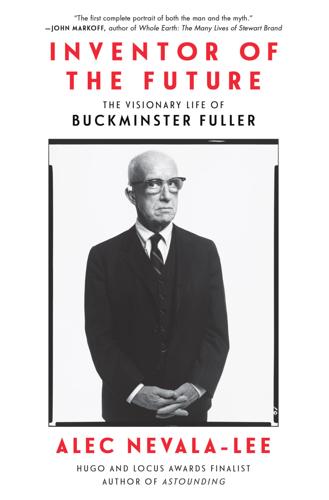
Inventor of the Future: The Visionary Life of Buckminster Fuller
by
Alec Nevala-Lee
Published 1 Aug 2022
Brand collaborated with Kesey’s Merry Pranksters, a roving band of outsiders devoted to the liberating effects of hallucinogenic drugs, to produce the celebrated Trips Festival in San Francisco in 1966. Although Tom Wolfe dismissed Brand as “an Indian freak” in his chronicle of this period, The Electric Kool-Aid Acid Test, his interests ranged widely, and his first great insight came almost immediately after he saw Fuller speak at San Jose State: I was bored in the spring of 1966, and on my rooftop in North Beach, San Francisco, I took a half a dose—maybe 150 micrograms—of LSD, and just had a nice, long, thoughtful afternoon that was colored by having listened to a fair number of Buckminster Fuller lectures and having read his books over the previous months.
…
.: Architecture in the Age of Radio. Zurich: Lars Müller, 2015. Williams, Jonathan. A Palpable Elysium. New York: Dim Gray Bar, 1997. Wolf, Amy. On Becoming an Artist: Isamu Noguchi and His Contemporaries, 1922–1960. Long Island City, NY: Isamu Noguchi Foundation and Garden Museum, 2010. Wolfe, Tom. The Electric Kool-Aid Acid Test. New York: Bantam Books, 1969. ———. From Bauhaus to Our House. New York: Farrar, Straus & Giroux, 1981. Wong, Yunn Chii. “The Geodesic Works of Richard Buckminster Fuller, 1948–1968 (The Universe as a Home of Man).” Doctoral thesis, Massachusetts Institute of Technology, 1999. World Design Science Decade 1965–1975, Phase 1, Document 1: Inventory of World Resources, Human Trends and Needs.
…
“at the outset”: RBF to Dale Klaus, February 9, 1970, quoted in SD, xxxiii. USCO, an experimental collective: Stewart Brand interview, The Tim Ferriss Show, February 3, 2018, https://tim.blog/2018/02/03/the-tim-ferriss-show-transcripts-stewart-brand (accessed January 2021). “an Indian freak”: Tom Wolfe, The Electric Kool-Aid Acid Test (New York: Bantam Books, 1969), 10. “I was bored”: Stewart Brand interview, The Tim Ferriss Show, February 3, 2018. “Why haven’t we seen”: Ibid. only one to reply: Stewart Brand interview with Massive Change Radio, https://www.yumpu.com/en/document/view/5742799/bruce-mau-design-stewart-brand-interview-25-massive-change (accessed January 2021).

You Can't Make This Stuff Up: The Complete Guide to Writing Creative Nonfiction--From Memoir to Literary Journalism and Everything in Between
by
Lee Gutkind
Published 13 Aug 2012
Not by the stupid mongrel likes of me.” 20 01 Barbara Ehrenreich, Nickel and Dimed: the Harper’s writer goes undercover as a house cleaner, waitress, and Walmart employee to see how the working poor make ends meet. - Ken Kesey, acclaimed novelist whose psychedelic parties featured prominently in Tom Wolfe’s The Electric Kool-Aid Acid Test and Hunter S. Thompson’s Hell’s Angels, dies at age 66. - Hollywood falls in love with nonfiction: A Beautiful Mind, adapted from Sylvia Nasar’s biography of Nobel laureate John Nash, wins four Academy Awards, including best picture. Also this year: big-screen adaptations of Mark Bowden’s Black Hawk Down and Elizabeth Wurtzel’s Prozac Nation. 2002 Stranger than fiction: Augusten Burroughs’s Running with Scissors, the author’s memoir of an adolescence spent living with his mother’s psychiatrist’s unconventional family, starts a two-year stay on the New York Times best-seller list
…
Cader, Michael Campanella, Roy Capote, Truman Carson, Rachel Carter, Jimmy Carville, James Catch 22 (Heller) Causey, Chap “Centre Court” (McPhee) “Charging Lions” (Phillips) “Chick lit,” Chronology, altering Churchill, Winston Clancy, Tom Clarity in writing Clinton, Bill Clinton, Hillary Rodham Code Name, “Mary” (Gardiner) Cod (Kurlansky) Coffee House Colbert, Stephen The Colbert Report (television program) Collier’s (magazine) Collins, Addie Mae Colorado Review (journal) Color (Finlay) Composites Compression Conroy, Pat Conscience, author’s Cooke, Janet The Corrections (Franzen) Cousteau, Jacques Cox, Billy Creative nonfiction coining term covering yourself credibility and defining disseminating/marketing ethical and moral boundaries in fakers/exaggerators finding ideas for flexibility and freedom offered by goal of graduate programs in legitimacy in libel and defamation markets for name changing in objectivity debate personal/private poetry and public/issue-oriented publishing role of scenes in as second genre for authors selecting subjects for sharing with subjects prior to publication story and structure of (see Structure of creative nonfiction) subgenres time line of truth and Vanity Fair article on See also Immersion nonfiction; Memoir Creative nonfiction cinema Creative Nonfiction Foundation, mentoring help from Creative Nonfiction (magazine) creative nonfiction time line definition of creative nonfiction editing essays for factual mistake in on Frey controversy on introspection and interiority PodLit Twitter contest Creative writing degree programs Creative writing fellowships Credibility, fact checking and Criticism, Wilde on Croft, Steve The Curve of Binding Energy (McPhee) D’Agata, John Davis, Wade Dead persons defamation and writing about recreation and Death in the Afternoon (Hemingway) Death of a Salesman (Miller) Defamation Defoe, Daniel Defonseca, Misha DeLillo, Don Description The Devil in the White City (Larson) The Devil Wears Prada (Weisberger) de Wael, Monique Dialogue The Diary of Anne Frank Diction Didion, Joan “Difficult Decisions” (Gutkind) deconstructing focus and frame of Dillard, Annie DiMaggio, Joe Dinesen, Isak Disaster nonfiction Disclaimers Dixon, Jo Dobler, Bruce Docudrama/documentary films Don’t Let Me Be Lonely (Rankine) Dostoyevsky, Fyodor Down and Out in Paris and London (Hemingway) Dramatic reading skills Dutch (Morris) Easy Rider (film) Eat, Pray, Love (Gilbert) Eberstadt, Mary Editing line Eggers, Dave Ehrenreich, Barbara Einstein, Albert Eire, Carlos Eisenberg, Jesse The Electric Kool-Aid Acid Test (Wolfe) Ellison, Harlan Embedded information Endings Entertainment Weekly (magazine) The Epic Story of the Building of the Brooklyn Bridge (McCullough) Esquire (magazine) Essays formal and informal lyric personal segmented Ethical and moral boundaries in creative nonfiction Exodus (Uris) Experience, writing and Experts, citing in creative nonfiction Fabrication The Fabulist (Glass) Fact checking D’Agata and David Sedaris personal truth vs.

Orange Sunshine: The Brotherhood of Eternal Love and Its Quest to Spread Peace, Love, and Acid to the World
by
Nicholas Schou
Published 16 Mar 2010
What was happening was people freely loving each other.” As spring turned to summer, the new scene that was unveiling itself in California got even wilder. In San Francisco, Ken Kesey’s Merry Pranksters were still recovering from their whirlwind bus tour across America, captured in vivid, surreal detail in Tom Wolfe’s book Electric Kool Aid Acid Test. In June, groups like the Grateful Dead, Jefferson Airplane, the Byrds, Jimi Hendrix and the Who headlined at the Monterey Pop Festival. Haight-Ashbury had become the center of the hippie culture. Just down the street from the Grateful Dead’s Victorian-era house, Brotherhood members Robert Ackerly and Tommy Tunnell, Griggs’s childhood friend from Oklahoma, lived in a house they called the Aquarian Temple.
…
Cox, Billy Crawford, Ronald “Fastie,” Crazy Horse the Cajun Sword Swallower Crittenden, James arrest of Dodge City and LSD used by Cutbirth, Gary Daisy the Leprechaun Dale, Jimmy Daw, Janet Daw, Johnny Delaney, Calvin Dick Dale and the Del-Tones DMT Dodge City children of free love in large-scale drug dealers in law enforcement in naming of Orange Sunshine and Tokhi brothers in underground drug stashes in Drop City commune Drug Enforcement Administration (DEA) Drugglers (Wright) Drury, Donald Dumeshausen, George and crusade against Brotherhood and Laguna Beach war on drugs in Maui Dupree, Woody “Tudor,” Durkee, Steve Dylan, Bob Eagles Electric Kool Aid Acid Test (Wolfe) Elf Lord Elysian Park Human Be-In Emmers, Bob Endless Summer “EXP,” Federal Bureau of Investigation (FBI): Hodgson investigated by and Laguna Beach war on drugs Orange Sunshine and Padilla’s arrest and Tokhi brothers’ visit and Fifteenth Street Gang Fisher, Duke Folger, Abigail Fong, Oden “Foxy Lady,” Frykowski, Wojciech Gale, Johnny Christmas Happening and cocaine and and crusade against Brotherhood death of Dodge City and finances of flamboyance of folklore about hashish and little followers of marijuana smuggling and Orange Sunshine and physical appearance of Rainbow Bridge and in run-ins with law surfing and Tokhi brothers’ visit and Garcia, Jerry German, Lyle “Lyncho”: arrest of and crusade against Brotherhood LSD used by marijuana and Gimme Shelter Golden Gate Park Goldwater, Barry Grateful Dead Christmas Happening and LSD and Stanley’s relationship with Great Britain Caserta in hashish smuggling in LSD dealing in Green, J.

Utopia Is Creepy: And Other Provocations
by
Nicholas Carr
Published 5 Sep 2016
One can only hope that these new underwearables will be equipped with a vibrate mode. THE BUS February 10, 2014 BEFORE THE APP, BEFORE the smartphone, before the network, there was the bus. It was mobile. It was social. And it headed out of San Francisco toward a new world. Tom Wolfe told the tale well in The Electric Kool-Aid Acid Test: “There are going to be times,” says Kesey, “when we can’t wait for somebody. Now, you’re either on the bus or off the bus. If you’re on the bus, and you get left behind, then you’ll find it again. If you’re off the bus in the first place—then it won’t make a damn.” And nobody had to have it spelled out for them.
…
(Gordon), 116–17 Doors, 126 dopamine, 332 dot-com crash, xvi Doudna, Jennifer, 335 driving, 195–98 Droit-Volet, Sylvie, 203–4 drones, 306 Drucker, Peter, 182 drugs, 119, 304, 331 psychoactive, 333–34 video games and, 262 virtual, 39–40 Drum, Kevin, 306 Dylan, Bob, 121, 294 dystopias, 108 ears, development and evolution of, 235 Earthlink, 280 “Easter, 1916” (Yeats), 88 Easton, David, 211 “E-book Reading Jumps; Print Book Reading Declines,” 140 ebooks, e-reader devices, 74, 122–23, 140–43, 225, 257, 274, 288, 290 reading experience transformed by, 252–54 economic gap, xix, 30–31, 176–77, 179 economy, effect of technology on, 174–77, 179–80 Edison, Thomas, xvii, 134, 229, 287 education, technological transformation of, 133–35 Edwards, Douglas, 280–82, 285 efficiency: in computer communication, 152–54 maximizing of, 84–85, 148, 164–65, 195–97, 209, 214, 234, 237–39, 303, 305 of robots, 321 Eiffel Tower, 341 e-learning fad, 134 election campaigns: of 2008, 314 of 2016, 314–20 transformed by technology, 314–20 Electric Kool-Aid Acid Test, The (Wolfe), 170 Eliot, T. S., 86–87, 144 Ellison, Larry, 17 Eloi, 114, 186 Elster, Jon, 64–65 email, 34, 73, 91, 134, 186 emancipation: central control vs., 165 computer technology perceived as path to, xvii–xix, 3, 11, 310 tools as, 308 see also liberation mythology embodied cognition, 297 Emerson, Ralph Waldo, 98, 100, 247–48, 254, 313 emojis, 167, 215 emoticons, 30, 215 emotional intelligence (EI), 162 EmoTree, 168 empathy, 251–52 Encyclopedia Britannica, 110–11 encyclopedias: open-source, 5–8, 110 traditional, 8, 14, 19, 110–11 see also Wikipedia endless-ladder myth, 174–77 “End of Books, The” (Uzanne), 287–88 “End of the Future, The” (Thiel), 116 England’s Dreaming (Savage), 63 Enlightenment, Age of, 271–72, 339 Ephron, Nora, 331 ethics, 48, 226 technology and, 304–11, 329–42 Etzler, John Adolphus, xvi–xvii Europeana, 272 European Union, 280 Everything Bad Is Good for You (Johnson), 13, 93–94 Everything Is Miscellaneous (Weinberger), 41 Exile on Main Street (album), 42–43, 45 “Exposure” (Heaney), xxii Extra Lives (Bissell), 260–63 eyeglasses, reality augmented by, 108–9, 131–32, 160–61 Facebook, xv, xvi, 30–31, 50, 106, 113, 115, 119, 137, 138, 155–59, 166, 178, 186, 197, 205, 210, 223, 257, 265, 269, 284 cynicism of, 158 marketing through, 53–54 political use of, 314, 317–20 privacy and, 107, 193 as record, 326–27 Facebook Home, 156–59 Facebook Social Advertising Event, 53 fact-mongering, 58–62 factory production, 308 efficiency in, 164–65, 237–38, 305 fads, 71–72 Faithfull, Marianne, 42 fallibility, human vs. computer, 321–23 farming, 296–98 technological advancement in, 305–6 Farrell, Thomas, 186 Faster (Gleick), 204 Favela Chic, 113–14 Federal Aviation Administration, 322–23 Federal Trade Commission, U.S.

The Contrarian: Peter Thiel and Silicon Valley's Pursuit of Power
by
Max Chafkin
Published 14 Sep 2021
He was interviewed in a dark room with dramatic lighting, and a few of the fellows were taped in their hometowns, reality-TV style, as they packed their bags and said goodbye to their parents. Thiel also partnered with a friendly journalist, Alexandra Wolfe Schiff, who happened to be the daughter of Tom Wolfe, to write a book about the project. The idea was to remake the elder Wolfe’s The Electric Kool-Aid Acid Test, but with Thiel traveling the country by bus like some modern-day Ken Kesey, picking up fellows and bringing them to Silicon Valley. The fellowship, and the accompanying media push, constituted a major element of Thiel’s attempt to change his public perception. He’d spent the early 2000s playing a role that wasn’t his—the heterosexual, high-living hedge fund manager—now he was fashioning a new character: a bold, risk-taking investor with a burning desire to blow up the system.
…
J., 196, 227 Davidson, James Dale, 175 The Sovereign Individual, 175, 208–9 DCGS, 147, 216–17, 234–35, 284 DealBook conference, 326 DeAnna, Kevin, 203 DeepMind, xiii deep state, 192–93 Defense Advanced Research Projects Agency (DARPA), 145, 333 Defense Department, 114, 145–46, 149, 288, 310 Defense Intelligence Agency (DIA), 149 de Grey, Aubrey, 138, 139, 326, 327 DeMartino, Anthony, 283 democracy, 14, 32, 112, 140, 141, 176, 182, 192, 250, 303, 318, 321, 322 Democrats, Democratic Party, 47, 94, 179, 197, 220, 281, 301, 306, 313, 333 “Atari,” 94 Facebook and, 299, 300, 302–3 Deng, Wendi, x Denny, Simon, 305–6 Denton, Nick, 123–29, 194–96, 200, 201, 227–33 Deploraball, 255 Dershowitz, Alan, 198 Details, 173, 175 Dhillon, Harmeet, 279 Dickinson, Pax, 202 Dietrick, Heather, 201 Digg, 118 Dimon, Jamie, 118 disruption, 77, 313 Diversity Myth, The (Thiel and Sacks), 40–42, 47, 53, 145, 202, 252, 344n DNA sequencing, 168 Doherty, Bran, 181 Donnelly, Sally, 283 Doohan, James, 59 dot-com era, 48, 68, 73, 80, 84, 85, 88, 95, 98, 118, 292 Dowd, Maureen, 266 Downs, Jim, 243 Drange, Matt, 230 drones, 152, 288 Dropbox, 298 Drudge Report, viii drug legalization, 178–79, 259 D’Souza, Aron, 166, 193–95, 198, 201 D’Souza, Dinesh, 31, 35, 42, 61, 99 Duke, David, 31 Dungeons & Dragons (D&D), 1–2, 8, 306 Earnhardt, Dale, Jr., 299 Eastwood, Clint, 182 eBay Billpoint and, 56, 65, 90 PayPal and, 56, 59, 64–66, 70, 80–81, 84–85, 147, 274 PayPal acquired by, xii, 76, 88–91, 105, 108 Eden, William, 331 Edmondson, James Larry, 38 education, higher, xvi, 158, 160–62, 191–92, 335 Edwards, John, 177 Eisenberg, Jesse, 159 Eisman, Steve, 132 Electric Kool-Aid Acid Test, The (Wolfe), 162 Elevation Partners, 76 Ellis, Bret Easton, 25 Ellis, Curt, 251 Ellison, Larry, 68, 188, 221 Emergent Ventures, 192 Endorse Liberty, 179–81 EPA (Environmental Protection Agency), 250, 251 Epstein, Marcus, 203 ESPN, 99 Esquire, 144 extropianism, 23 Facebook, viii, ix, xiii, 77, 105–9, 112, 119, 134, 135, 141, 159, 162–64, 180, 182, 213, 234, 245, 259, 264, 268, 271, 276–77, 279, 280, 282, 285, 291–304, 317 Cambridge Analytica scandal and, 219–20 China and, 298–99 conservative opinions and, viii–xi, 245–46, 298, 300, 303–4 COVID pandemic and, 309, 313 Democrats and, 299, 300, 302–3 IPO of, 292, 294 Luckey at, 296 and 2008 US presidential election, 135 and 2016 US presidential election, 299, 323 Russia and, 245, 299 Trump and, 220, 245–46, 299–300, 302–4, 323 users’ sharing of information on, 297 Fairchild Semiconductor, 143–44 Falwell, Jerry, Jr., 237 Fast Company, 135 Fathom Radiant, 168 FBI, 79, 80, 114, 149, 289 FCC, 249 FDA (Food and Drug Administration), xvii, 181–82, 249, 253–54, 308, 316, 327 Federalist Society, 33, 170, 250 Federal Reserve, 133, 178, 183 Federation for American Immigration Reform (FAIR), 139, 266 feminism, 36, 202 Ferguson, Niall, 280–81 Fidelity, 211 Fieldlink, 50–51 1517 Fund, 169 financial crisis of 2008, 131–33, 145, 311, 313 Great Recession following, 104, 132, 157, 178 Financial Times, 124 Fincher, David, 159 Finish, The (Bowden), 152–53 Fiorina, Carly, 221, 223–25 Fischer, Bobby, 7, 22 Flatiron Health, 253 Flickr, 118 Flooz, 56, 68, 72 Flynn, Michael, 148–49, 235, 283–84 Forbes, 154, 215, 230 Ford, Henry, 270 formalism, 176 Fortune, 121, 192, 223, 231 Foster, Jodie, 128 Foster City, Calif., 1–2, 6–7, 10 Founders Fund, 119–21, 126, 138, 160, 162–64, 167, 168, 170, 173, 180, 189, 211, 214, 234, 248, 249, 269, 282, 285, 293, 297, 309, 310, 319, 330 Founder’s Paradox, The (Denny), 305–6 Fountainhead, The (Rand), 176 Fox News, x, 179, 247–48, 286, 289, 332 Free Forever PAC, 315 Frieden, Tom, 311 Friedman, Milton, 137 Friedman, Patri, 136–37, 169, 174, 176 Friedman, Thomas, 189 Friendster, 105 Frisson, 97–99, 108, 210 From Poop to Gold (Jones), 180 FTC, 249, 281 FWD.us, 263 Gaetz, Matt, 302 gambling, 81–83 Gamergate, 204 GameStop, 330 Garner, Eric, 187 Gates, Bill, 68 Gausebeck, David, 78 Gawker Media, xiv–xvi, xviii, 122, 123–24, 126–30, 133, 134, 137, 153, 184, 189, 193–98, 200–202, 228–33, 239, 277, 279, 287, 326, 334 Hogan’s suit against, xv, 195–97, 201, 227–34 Valleywag, 121, 123, 124, 126–29, 134, 140–42, 189 gay community, 34, 40–42, 125, 177 AIDS and, 32, 34, 40 conservatives in, 177 gay marriage, 177, 179, 199, 240 gay rights, 40–41, 177, 184, 186, 259, 314 homophobia and, 32–35, 40, 126, 128 outing and, 128, 129 Thiel’s sexual orientation, xviii, 41, 98, 104, 125–29, 134, 138, 239, 241, 243 Gelernter, David, 252–53 Genentech, 163 General Society of Mechanics and Tradesmen, 192 Genius Grants for Geeks, 160 Germany, 3 Gettings, Nathan, 113, 114 Ghostnet, 146, 153 Gibney, Bruce, 163 Gibson, Michael, 164, 165, 169, 174 Giesea, Jeff, 43, 200–201, 204, 255, 278, 288 gig workers, 189, 190 Gingrich, Newt, 213 Gionet, Tim, 255 Girard, René, 19–20, 42, 111 GitHub, 286 Gizmodo, viii Glitch, 230 globalization, 112, 131, 189, 209, 225, 259, 298 Goliath (Stoller), 329–30 Goldin, David, 227 Goldman Sachs, 185 Goldwater, Barry, 15, 60–61, 287 Google, xii, xiv, xvi, 55, 57, 98, 123, 133, 136, 137, 145, 169, 180, 188, 190, 191, 234, 245, 259, 261, 263, 274–81, 288–90, 295, 300, 318, 328 artificial intelligence project of, xiii, 280, 288 China and, 288–89, 321 conservatives at, 277–79 Damore at, 277–79, 281, 295–96 Defense Department and, 288 Hawley’s antitrust investigation of, 279–80 indexing of websites by, 297 monopoly of, 274–77 Palantir and, 289, 290 Places, 274 Trump and, 276 Gopnik, Adam, 124 GOProud, 177 Gore, Al, 63, 94 Gorka, Sebastian, 332 Gorshkov, Vasiliy, 80 Gorsuch, Neil, 314 Gotham, 116 GotNews, 199 Government Accountability Office, 213 Gowalla, 164 Graeber, David, 192 Greatest Trade Ever, The (Zuckerman), 132 Great Recession, 104, 132, 157, 178 Greenwald, Glenn, 150 Grigoriadis, Vanessa, 124 growth hacking, 61, 78, 271 Gruender, Raymond, 82 Guardian, 154, 230 guns, 184 Habermas, Jürgen, 115 Hacker News, 170–71 Hagel, Chuck, 271 Haines, Avril, 333 Halcyon Molecular, 138, 167–68 Haley, Nikki, 182 Hamerton-Kelly, Robert, 19–20, 111 Hamilton College, 334–36 Happer, William, 251–52 Harder, Charles, 195–97, 228, 229 Harmon, Jeffrey, 180 Harper’s, 176 Harrington, Kevin, 101, 255, 256, 283 Harris, Andy, 265 Harris, Kamala, 300, 304 Harry Potter and the Methods of Rationality, 174–75 Harvard Business School, 192 Harvard Crimson, 108 Harvard University, 107–8, 191, 308 Hastings, Reed, 295, 296, 298 Hawley, Josh, 279–80, 288, 301, 321–23, 331–33 Hayek, Friedrich, 68 HBGary, 150–51 Health and Human Services (HHS) Department, 311, 318, 320 Hellman, Martin, 50–51, 54, 172 Hello, 167 Heritage Foundation, viii Hewlett-Packard (HP), 223–24 Heyer, Heather, 272 Hillbilly Elegy (Vance), 288, 332 Hitler, Adolf, 251–52, 255, 270 Hitler Youth, 30 Ho, Ralph, 101 Hoffman, Reid, 23–24, 42, 65, 67, 71, 76, 85, 107, 108, 171, 280, 333 Hogan, Hulk (Terry Bollea), xv, 182, 195–97, 201, 227–34 Holiday, Ryan, 193, 297–98 Holocaust, 203, 251–52, 255 Hoover, Herbert, 14, 33 Hoover Institution, 14, 15, 316 Houston, Drew, 298 Howery, Ken, 53, 101, 119 How Google Works (Schmidt), 54 HP, 144 HuffPost, 204 Hughes, Chris, 135 Hume, Hamish, 234, 258 Hunter, Duncan, 149, 216, 217 Hunter, Duncan, Sr., 149 Hurley, Chad, 105 Hurley, Doug, 310 Hurricane Katrina, 209 Hurston, Zora Neale, 25, 26 Hyde, Marina, 230 IBM, 257 Iger, Bob, 264 Igor, 79, 112–14 Illiberal Education (D’Souza), 31, 35, 42 Immelt, Jeff, 264 immigration, 112, 139–40, 185, 225, 259, 261, 263, 271, 298, 313, 315 Customs and Border Protection, 267, 285–86 Palantir and, 266–68, 285–87, 290, 318 and separation of families at border, 285–86 Trump and, xii, xiii, 226, 244, 247, 260–68, 272, 285–86, 309, 314 visas and, see visas Immigration and Customs Enforcement (ICE), 267, 268, 286, 287, 290, 318 Inc., xv, 157 incels, 41 Inception, 118–19, 215 Independent Institute, 42, 82 indeterminate optimism, 171 Ingraham, Laura, 31 initial public offerings (IPOs), 46 In-Q-Tel, 116 Instagram, 296, 300–301 Intel, 144, 163, 249, 257 Intellectual Dark Web, 278, 282, 319 Intelligence Advisory Board, 271–72 intelligence work, 114, 117, 148–49, 217 Intercollegiate Studies Institute, 25, 42 International Space Station, 310 Iran, 116 Iraq War, 135, 146, 148, 178, 199, 216, 247, 284, 303 IRAs, 212–13, 313 IRS, viii, 213, 214 ISIS, 311 Islam, see Muslims, Islam Ivanov, Alexey, 80 Jackson, Candice, 243 Jackson, Eric, 53, 121 Jackson, Jesse, 31–32, 47 Jackson, Michael, 26–27, 35 Japanese Americans, 266 Jews, 252, 255, 270, 321 Holocaust and, 203, 251–52, 255 Jobs, Steve, 8, 75–77, 124, 144, 262, 331, 334, 335 Stanford University address of, 334 John M.

Gonzo: The Life of Hunter S. Thompson
by
Corey Seymour
,
Johnny Depp
and
Jann S. Wenner
Published 31 Oct 2007
I introduced them to each other for the first time when they were both writing for Rolling Stone. In fact, the first installment of the Rolling Stone version of “The Right Stuff” opens with a lede passage that’s an homage to Hunter’s style. TOM WOLFE Hunter had been very kind to me when I was writing The Electric Kool-Aid Acid Test. I had gathered from Hell’s Angels that he had been present when Ken Kesey and his Merry Pranksters gave a party for the Hells Angels, which had happened before I had even known about Kesey and the Pranksters. I called Hunter up from out of the blue, and he sent me some tapes he had recorded at that crazy party, which was really generous of him.
…
TEX WEAVER was a Woody Creek neighbor of Hunter’s. JANE WENNER is the wife of Jann Wenner and a vice president of Wenner Media. JANN WENNER is the founder, editor, and publisher of Rolling Stone. JOHN WILBUR is a former guard for the Washington Redskins. TOM WOLFE is the author of The Electric Kool-Aid Acid Test, The Right Stuff, and Bonfire of the Vanities, among many other titles. BARNEY WYCOFF is an Aspen gallery owner. ACKNOWLEDGMENTS Fifteen years ago, Jann charged me with being Hunter’s aide-de-camp in New York. Two and a half years ago, he directed me to compile Hunter’s life story.
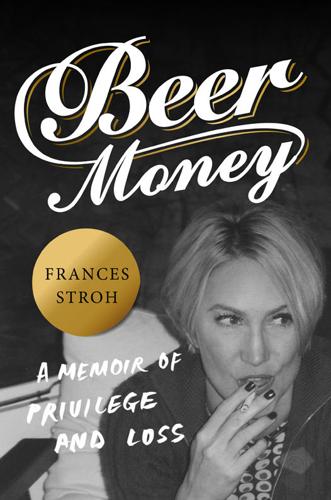
Beer Money: A Memoir of Privilege and Loss
by
Frances Stroh
Published 2 May 2016
The “Krishna center” was located on the sprawling estate of the Fisher Mansion, one of the old Detroit houses emblematic of the automotive industry’s heyday, donated to the sect by Alfie Ford. Meditation, music, drugs, and alcohol, they were all facets of the same mind-expanding trajectory—especially potent when combined. My friends and I had all read On the Road and The Electric Kool-Aid Acid Test. And with the help of state-of-the-art amphetamines and a healthy dose of cynicism we had taken the legacy of the fifties and the sixties to new heights—in the eighties. The Corinthian pillars of the meditation hall were edged in gold. A robed, pot-bellied man with a Krishna ponytail sat lotus style facing the large group.
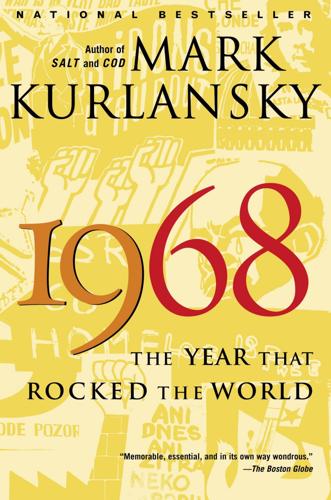
1968: The Year That Rocked the World
by
Mark Kurlansky
Published 30 Dec 2003
In 1966 LSD became an illegal substance by an act of Congress and Leary’s fame spread through arrests. Alpert became a Hindu and changed his name to Baba Ram Dass. In 1967, Allen Ginsberg urged everyone over the age of fourteen to try LSD at least once. Tom Wolfe’s bestselling book that extolled and popularized LSD, The Electric Kool-Aid Acid Test, was published in 1968. It was an unpredictable drug. Some people had a pleasant experience and others nightmarish cycles of mania and depression or paranoia known as “a bad trip.” Students who took pride in being responsible drug abusers insisted that tripping be done under the supervision of a friend who did not take the drug but had experienced it before.
…
Prague Spring: A Report on Czechoslovakia 1968. New York: Penguin Books, 1969. DRUGS Leary, Timothy. Flashbacks. Los Angeles: J. P. Tarcher, 1983. Lee, Martin A., and Bruce Shalin. Acid Dreams: The Complete Social History of LSD: The CIA, the Sixties, and Beyond. New York: Grove Press, 1992. Wolfe, Tom. The Electric Kool-Aid Acid Test. New York: Farrar, Straus & Giroux, 1968. FEMINISM Davis, Flora. Moving the Mountain: The Women’s Movement in America Since 1960. New York: Simon & Schuster, 1991. de Beauvoir, Simone. The Second Sex: The Class Manifesto of the Liberated Woman. New York: Vintage, 1974. Evans, Sara.
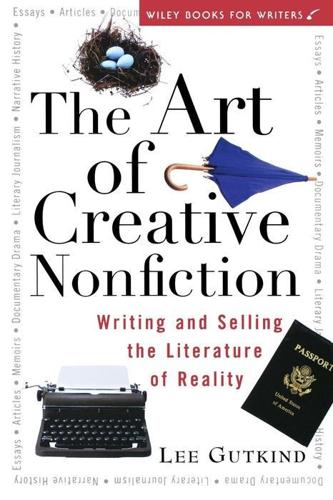
Art of Creative Nonfiction: Writing and Selling the Literature of Reality
by
Lee Gutkind
and
Purba
Published 1 Jan 1997
When I refer to creative nonfiction books I include memoirs (or autobiography), and documentary drama (a term more often used to refer to films, such as Hoop Dreams, which captures the lives of two inner-city high school basketball players over a six-year period). Page 8 The Creative Part Much of what is generically referred to as literary journalism can be classified as creative nonfiction. In the early 1960s, author and social commentator Tom Wolfe (The Right Stuff, The Electric Kool Aid Acid Test) coined a term that lasted for more than a decade-the "new journalism ." Wolfe's new journalism faded, but over the past five years creative nonfiction clearly has evolved as the accepted way of describing what is becoming the most important and popular genre in the literary world today.
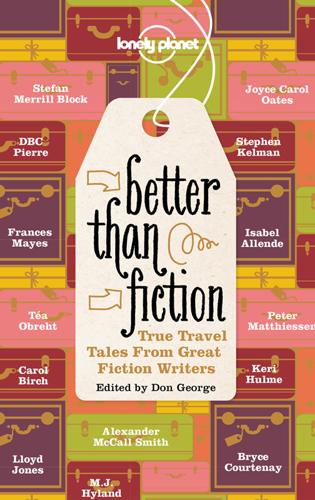
Better Than Fiction
by
Lonely Planet
My family’s annual vacations had always consisted of weeks-long summer driving trips, and almost exclusively north, to cool, tidy, familiar Minnesotas and Wisconsins and Manitobas. I had studied Spanish for ten years. I was 17 going on 18, out of high school a semester early, working a minimum-wage job and admitted to the college of my choice. And for three years my favorite book had been The Electric Kool-Aid Acid Test, Tom Wolfe’s iconifying 1968 chronicle of Ken Kesey and his dozen friends’ pointless and profound coast-to-coast-to-coast 1964 trip across America in an old school bus. It was a moment, for people my age, when high adventure seemed not only possible but easy, not only easy but obligatory.

Back to Blood
by
Tom Wolfe
Published 1 Jan 2012
About the Author Tom Wolfe is the author of more than a dozen books, among them The Electric Kool-Aid Acid Test, The Right Stuff, The Bonfire of the Vanities, A Man in Full, and I Am Charlotte Simmons. A native of Richmond, Virginia, he earned his BA at Washington and Lee University and a PhD in American Studies at Yale. He received the National Book Foundation’s 2010 Medal for Distinguished Contribution to American Letters. He lives in New York City. ALSO BY TOM WOLFE The Kandy-Kolored Tangerine-Flake Streamline Baby The Pump House Gang The Electric Kool-Aid Acid Test Radical Chic & Mau-Mauing the Flak Catchers The Painted Word Mauve Gloves & Madmen, Clutter & Vine The Right Stuff In Our Time From Bauhaus to Our House The Bonfire of the Vanities A Man in Full Hooking Up I Am Charlotte Simmons * “Look at her!

Artificial Unintelligence: How Computers Misunderstand the World
by
Meredith Broussard
Published 19 Apr 2018
Doug Engelbart, the NASA- and ARPA-funded researcher who performed the 1968 “mother of all demos” that showed for the first time all the hardware and software elements of modern computing, dropped acid at the International Foundation for Advanced Study, the legal home for academic inquiry into LSD that lasted until 1967. Operating the camera for Engelbart’s demo was Stewart Brand, the Whole Earth Catalog founder who helped organize LSD guru Ken Kesey’s infamous acid tests, massive drug-fueled cross-country bacchanals that were chronicled in Tom Wolfe’s book The Electric Kool-Aid Acid Test. Brand was the most important connector between Minsky’s world of scientists and the counterculture. “We are as gods and might as well get good at it,” Brand wrote as the first line of the Whole Earth Catalog in 1968.16 That publication was a major source of inspiration for almost all the early Internet pioneers, from Steve Jobs to tech-publishing titan Tim O’Reilly.
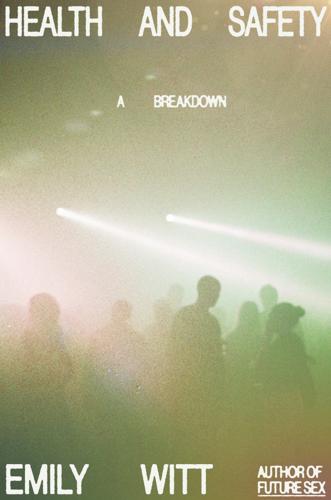
Health and Safety: A Breakdown
by
Emily Witt
Published 16 Sep 2024
I followed ayahuasca with every drug I could find, mostly the classics: LSD, MDMA, mushrooms, ketamine. As I worked on my first book, about sexuality, I was already planning to write a book about drugs. My bookshelves filled up with literature published by New Age imprints. I read the canon: Be Here Now, The Electric Kool-Aid Acid Test, The Doors of Perception, The Varieties of Religious Experience, PiHKAL. I read self-published books and esoteric novels, like William Craddock’s forgotten LSD bildungsroman Be Not Content and Krystle Cole’s Lysergic, an account of the LSD bust in Kansas, which happened in an underground missile silo.
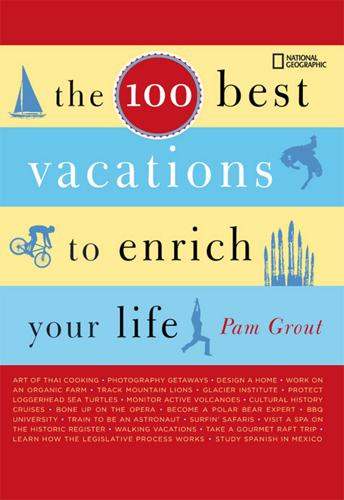
The 100 Best Vacations to Enrich Your Life
by
Pam Grout
Published 14 May 2007
The Grateful Dead: Not only did the band donate the camp’s awesome sound system (it allows Wavy Gravy to blast the children out of bed each morning with Jimi Hendrix’s version of “The Star-Spangled Banner”), but Mickey Hart, the band’s drummer, often shows up at Camp Winnarainbow to teach the fine art of tom-tom making. B. B. King: When he was born, Wavy’s parents named him Hugh Romney. But, while doing a comedy show for B. B. King in 1969, it was the King of Blues himself who bequeathed Wavy the nickname he still uses today. Tom Wolfe: Wavy provided the name for Wolfe’s first novel, The Electric Kool-Aid Acid Test, about the psychedelic sixties. While traveling with Ken Kesey’s Merry Pranksters, Wavy started calling LSD “electric kool-aid,” and Wolfe, who was also traveling with the Pranksters, figured it was the perfect name for his book. Everyone at Woodstock: It was Wavy who got up on the Woodstock stage in 1969 and famously announced: “What we have in mind is breakfast in bed for 400,000
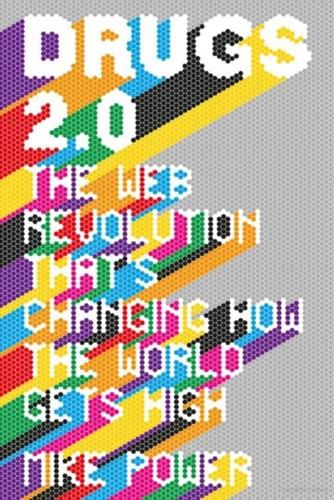
Drugs 2.0: The Web Revolution That's Changing How the World Gets High
by
Mike Power
Published 1 May 2013
It now reads much like a printed blog; it was a paper website, in the words of blogger and author Kevin Kelly, that was sprinting before the web even took its first shaky steps.3 Its statement of intent in its launch issue reads like a manifesto that has been realized by today’s web users: ‘A realm of intimate personal power is developing – the power of the individual to conduct his own education, find his own inspiration, shape his own environment, and share his adventure with whoever is interested. Tools that aid this process are sought and promoted by the Whole Earth Catalog.’ Brand, whose collaborations with Ken Kesey’s Merry Pranksters would evolve into the Acid Tests, the 1960s proto-raves fuelled by LSD and documented by Tom Wolfe in The Electric Kool-Aid Acid Test, felt that information technology was the next stage in humans’ evolutionary progress. Info-anarchists and cyber-utopians not only laid the foundations for the internet, but would act as outriders for the free software movement. The net’s founding mothers and fathers wanted to share their knowledge, and everyone else’s knowledge, all at once, all the time, for free, with no centralized control system.

Late Bloomers: The Power of Patience in a World Obsessed With Early Achievement
by
Rich Karlgaard
Published 15 Apr 2019
Sometimes the negative words are motivated by undisguised envy, spite, or unhealthy competitiveness. But more often, your critics may not be aware of their harmful negativity. They may sincerely couch their warnings in words of concern: “I don’t know, Sarah. I just don’t want you to get hurt.” As the author Tom Wolfe once said in explaining the philosophy behind The Electric Kool-Aid Acid Test and The Right Stuff, “Status has more or less been my system for approaching any subject. For instance, The Right Stuff is not a book about space, it’s a book about status competition among pilots.” In Wolfe’s work, the evolutionary truth that humans compete in extreme ways for status is endlessly entertaining.
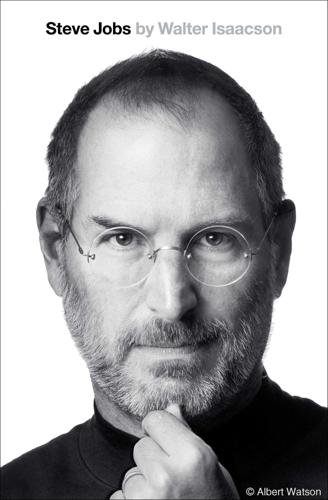
Steve Jobs
by
Walter Isaacson
Published 23 Oct 2011
One person who encouraged the denizens of the counterculture to make common cause with the hackers was Stewart Brand. A puckish visionary who generated fun and ideas over many decades, Brand was a participant in one of the early sixties LSD studies in Palo Alto. He joined with his fellow subject Ken Kesey to produce the acid-celebrating Trips Festival, appeared in the opening scene of Tom Wolfe’s The Electric Kool-Aid Acid Test, and worked with Doug Engelbart to create a seminal sound-and-light presentation of new technologies called the Mother of All Demos. “Most of our generation scorned computers as the embodiment of centralized control,” Brand later noted. “But a tiny contingent—later called hackers—embraced computers and set about transforming them into tools of liberation.
…
Dre, 402, 406 Donovan, 413, 414 Doonesbury (comic strip), 309 Doors, 413 Draper, John (Captain Crunch), 27, 29 Dream Act, 546 DreamWorks SKG, 427–29 Drexler, Millard “Mickey,” 321, 370, 371–72, 558 Dreyfuss, Richard, 330–31 Dudman, Jack, 40 DuPont, 310, 318 Dylan, Bob, 25–26, 52, 153, 168, 189, 207–8, 212, 251, 330, 400, 402, 403, 412, 413, 421, 494, 561, 570 complete boxed set of, 416–18 SJ’s visit with, 415–16 Dynabook project, 95, 475 Eames, Charles and Ray, 127 Earhart, Amelia, 330 Eason, James, 483–85, 487, 493–94, 550 eBay, 321 ebooks, 503 Economist, 493 Eddie Bauer (store), 369 Edge, The, 411, 411, 420, 421, 423 Edison, Thomas A., 330, 566 education reform movement, 543–44 Egan, Jennifer, 261–63, 438 Egypt, 258 Ehret, Arnold, 36, 548 Eichler, Joseph, 7, 125 Einstein, Albert, xvii, xviii, xix, 91, 119, 171, 330, 332 Eisenhower, Dwight D., 8 Eisenstat, Al, 122, 198, 201, 202–3, 209–10, 216, 221 Eisner, Michael, xiv, 242, 289–92, 428, 432–38, 441 Disney-Pixar merger opposed by, 442 ouster of, 426–27 Senate testimony of, 432–33 SJ’s feud with, 432–35 Electric Kool-Aid Acid Test, The (Wolfe), 58 Electronic Data Systems, 227 Electronic Frontier Foundation, 280 Electronic News, 10 Elias, John, 469 Eliot, T. S., 98 Elliot, Jay, 83, 197, 200–201, 206 Ellison, Larry, xiv, 283, 289–90, 296, 299–300, 303, 306, 310, 311, 313, 320, 332, 333, 349, 365, 372, 374, 545 Emanuel, Rahm, 495, 497 EMI Music, 395, 420, 524 Eminem, 399, 402, 413 Emotional Rescue (Rolling Stones), 412 Empire Burlesque (Dylan), 207–8, 412 Engelbart, Doug, 57–58 ENIAC, 23 Entrepreneurs, The (documentary), 227 Esalen, 57 eSarcasm (website), 517 Espinosa, Chris, 81, 104, 132, 135 Esquire, 27, 219, 396, 478 Esslinger, Hartmut, 132, 193, 221, 222, 241 est, 57 Estridge, Don, 149 Evangelist, Mike, 381–82 Facebook, 275, 545 Fadell, Tony, xiv, 385–89, 405, 409–10, 466–69, 473, 492, 520 Fairchild Semiconductor, 9–10, 76, 79, 82, 568 FairPlay (management system), 399, 408 Faith No More, 498 Faraday, Michael, 519 Farber, Dan, 137 Fariña, Mimi, 250 Feadship, 529 Federal Bureau of Investigation (FBI), 241 Federalist Papers, The, 497 Felsenstein, Lee, 61, 70 Fernandez, Bill, 25, 104 Ferrentino, Rick, 12–13 Ferris, James, 128 Few Good Men, A (film), 456 Feynman, Richard, 330 File (app), 176 FileServer (software), 200, 205 Final Cut Pro, 380 Financial Times, 304, 309 Finding Nemo (film), 434 Fine Young Cannibals, 271 FingerWorks, 469 Fiore, Mark, 516 FireWire, 380–81, 390, 393 Fisher, George M.

Cataloging the World: Paul Otlet and the Birth of the Information Age
by
Alex Wright
Published 6 Jun 2014
Dressed in the white shirt of a working engineer, the soft-spoken former Navy telegraph operator demonstrated a working model of a system that struck many of the idealistic San Francisco counterculture types in attendance as representing nothing short of a revolution in human consciousness. Equipped with a video monitor, keyboard, and central pro cessor, Engelbart’s demo included applications for word processing, sending messages between users, and even building links from one document to another. Stewart Brand (of the Electric Kool-Aid Acid Test and Whole Earth Catalog fame) manned a video camera trained on Engelbart’s on-stage keyboard, while Engelbart proceeded to show a working prototype of a fully functional hypertext system, including a word processor, video and graphics displays, and the ability to link one document to another, all connected to another computer in Menlo Park by a 1,200-baud modem.
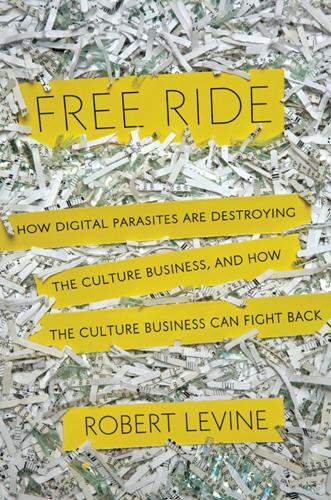
Free Ride
by
Robert Levine
Published 25 Oct 2011
On the other hand, information wants to be free, because the cost of getting it out is getting lower and lower all the time. So you have these two fighting against each other. Brand’s own information wanted to be expensive, and he made a small fortune in the publishing business. A bohemian intellectual who befriended both Buckminster Fuller and Ken Kesey, Brand appeared as a character in Tom Wolfe’s Electric Kool-Aid Acid Test and campaigned for NASA to release a picture of Earth from space. As living off the land became part of the post-hippie zeitgeist, he created the Whole Earth Catalog, an influential compendium of advice that Steve Jobs once referred to as “sort of like Google in paperback form.”19 He started out peddling an early version from the back of his truck and went on to sell more than a million copies of a later edition.

Zucked: Waking Up to the Facebook Catastrophe
by
Roger McNamee
Published 1 Jan 2019
The Innovators: How a Group of Hackers, Geniuses and Geeks Created the Digital Revolution, by Walter Isaacson (New York: Simon & Schuster, 2014), looks back on the key people whose work created Silicon Valley. What the Dormouse Said: How the 60s Counterculture Shaped the Personal Computer Industry, by John Markoff (New York: Viking, 2005), shows how hippie culture became the culture of the PC industry. Tom Wolfe’s The Electric Kool-Aid Acid Test (New York: Farrar Straus and Giroux, 1968) is a helpful introduction to the culture embraced by a core group in Silicon Valley at a critical time. Fire in the Valley: The Making of the Personal Computer, by Paul Freiberger and Michael Swaine (Berkeley: Osborne/McGraw-Hill, 1984), is the best book I know on the early days of the personal computer industry, from computer clubs to the start of Microsoft and Apple, to the battle that followed.

Coastal California
by
Lonely Planet
A mile in from San Gregorio State Beach on Hwy 1, kick off your shoes and stomp your feet to live bluegrass, Celtic and folk music on the weekends at the landmark San Gregorio General Store (www.sangregoriostore.com), and check out the wooden bar singed by area branding irons. Eight miles east is the tiny township of La Honda, former home to One Flew Over the Cuckoo’s Nest author Ken Kesey, and the launching spot for his 1964 psychedelic bus trip immortalized in Tom Wolfe’s The Electric Kool-Aid Acid Test. Housed in an old blacksmith’s shop, Apple Jack’s Inn ( 650-747-0331) is a rustic, down-home bar offering live music on weekends and lots of local color. PESCADERO A foggy speck of coastside crossroads between the cities of San Francisco and Santa Cruz, 150-year-old Pescadero is a close-knit rural town of sugar-lending neighbors and community pancake breakfasts.
…
You’ve probably already read books by Californians without knowing it, for example, Ray Bradbury’s 1950s dystopian classic Fahrenheit 451; Alice Walker’s Pulitzer Prize–winning The Color Purple ; Ken Kesey’s quintessential ’60s novel One Flew Over the Cuckoo ’ s Nest ; UC Berkeley professor Maxine Hong Kingston’s The Woman Warrior ; Michael Chabon’s Pulitzer Prize-winning The Amazing Adventures of Kavalier and Clay ; or Dave Eggers, the Bay area hipster behind McSweeney’s quarterly literary journal. Few writers nail California culture as well as Joan Didion. She’s best known for her collection of essays, Slouching Towards Bethlehem, which takes a caustic look at 1960s flower power and Haight-Ashbury. Tom Wolfe also put ’60s San Francisco in perspective with The Electric Kool-Aid Acid Test, which follows Ken Kesey’s band of Merry Pranksters, who began their acid-laced ‘magic bus’ journey near Santa Cruz. By that time, the Beat generation of writers had already fired up San Francisco’s North Beach literary scene beginning in the 1950s, including with Allen Ginsberg’s epic poem Howl and Jack Kerouac’s iconic novel On the Road.
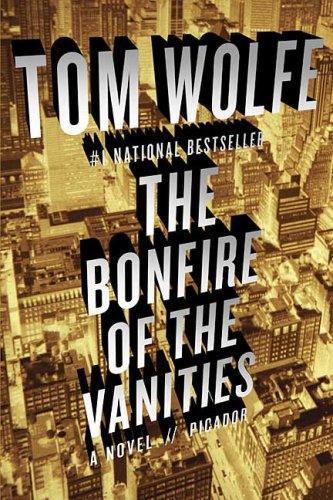
The Bonfire of the Vanities
by
Tom Wolfe
Published 4 Mar 2008
He was reportedly on a sailing vessel in the Aegean Sea with his bride of two weeks, Lady Evelyn, daughter of Sir Gerald Steiner, the publisher and financier. Also by Tom Wolfe The Kandy-Kolored Tangerine-Flake Streamline Baby The Pump House Gang The Electric Kool-Aid Acid Test Radical Chic & Mau-Mauing the Flak Catchers The Painted Word Mauve Gloves & Madmen, Clutter & Vine The Right Stuff In Our Time From Bauhaus to Our House A Man in Full Hooking Up I Am Charlotte Simmons © 2004 by Mark Seliger Tom Wolfe is the author of a dozen books, among them such contemporary classics as The Electric Kool-Aid Acid Test and I Am Charlotte Simmons. He lives in New York City. THE BONFIRE OF THE VANITIES. Copyright © 1987 by Tom Wolfe.
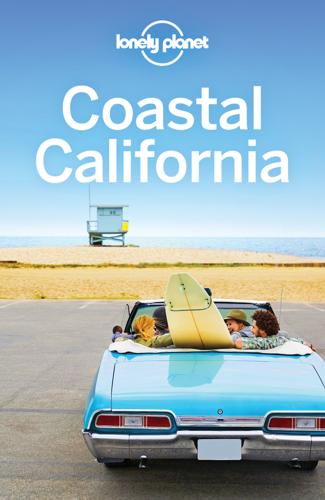
Coastal California Travel Guide
by
Lonely Planet
A mile in from San Gregorio State Beach ( GOOGLE MAP ; %650-726-8819; www.parks.ca.gov; Hwy 1, San Gregorio; per car $8; h8am-sunset) on Hwy 1, kick off your shoes and stomp your feet to live bluegrass, Celtic and folk music on the weekends at the San Gregorio General Store ( GOOGLE MAP ; %650-726-0565; www.sangregoriostore.com; 7615 Stage Rd, San Gregorio; hstore 10:30am-6pm Sun-Thu, to 7pm Fri, 10am-7pm Sat, to 6pm Sun). Check out the wooden bar singed by area branding irons. Eight miles further east is the tiny township of La Honda, former home to One Flew Over the Cuckoo’s Nest author Ken Kesey and the launching spot for his 1964 psychedelic bus trip immortalized in Tom Wolfe’s The Electric Kool-Aid Acid Test. Housed in a 19th-century blacksmith’s shop, Apple Jack’s ( GOOGLE MAP ; %650-747-0331; 8790 Hwy 84, La Honda; hnoon-2am) is a rustic, down-home country-and-western bar with motorcycles lined up in a row outside. To stretch your legs in the redwoods, Sam McDonald County Park ( GOOGLE MAP ; %650-879-0238; http://parks.smcgov.org/sam-mcdonald-park; 13435 Pescadero Creek Rd, Loma Mar; per car $6; h8am-8pm Apr-Aug, closes earlier Sep-Mar; pc), 2 miles south of La Honda, has forested hiking trails and a secluded hike-to cabin ( GOOGLE MAP ; %650-390-8411; www.sierraclub.org/loma-prieta/hikers-hut; per night adult $20-30, child $10; n).
…
Her collection of literary nonfiction essays Slouching Towards Bethlehem captures 1960s flower power at the exact moment it blooms and wilts. Didion pioneered immersive first-person New Journalism with fellow ’60s California chroniclers Hunter S Thompson (Hells Angels: A Strange and Terrible Saga) and Tom Wolfe (The Electric Kool-Aid Acid Test). In the 1970s, Charles Bukowski’s semiautobiographical novel Post Office captured down-and-out Downtown LA, while Richard Vasquez’ Chicano took a dramatic look at LA’s Latino barrio. Armistead Maupin captured the rise of disco, cults, medical marijuana, feminism and gay pride in 1970s San Francisco as it happened in his serialized Tales of the City.

Tripping on Utopia: Margaret Mead, the Cold War, and the Troubled Birth of Psychedelic Science
by
Benjamin Breen
Published 16 Jan 2024
Yet while the psychedelic counterculture embraced “non-Western spirituality,” it did so in a superficial and romanticized way that did not truly challenge Western cultural norms. Tom Wolfe memorably described Stewart Brand (who drives the Merry Pranksters’ bus through the opening pages of The Electric Kool-Aid Acid Test) as wearing “just an Indian bead necktie on bare skin and a white butcher’s coat with medals from the King of Sweden on it.” Underneath the costumes, however, were bodies that were almost invariably American, white, middle class, and male. And in the new psychedelic spaces that emerged across the United States, from Esalen to Greenwich Village, it did not take long for all the usual ills of twentieth-century American life—alcoholism, political polarization, racism, greed—to reassert themselves.

The Long Boom: A Vision for the Coming Age of Prosperity
by
Peter Schwartz
,
Peter Leyden
and
Joel Hyatt
Published 18 Oct 2000
Edge City, Life on the New Frontier, by Joel Garreau (New York: Doubleday, 1988). On the surface, identifies the emergence of a new form of suburban city-and analyzes it positively, as the future being born. On a deeper level, it also makes the case for the ingenuity and adaptability of average Americans, The Electric Kool-Aid Acid Test, by Tom Wolfe (New York: Bantam Books, 1968). Captures the essence of the northern California ideology of extreme openness and creative exploration by telling the story of the countercultural heyday leading up to 1968. That somewhat moderated mentality partly accounts for the region's high-tech success today.
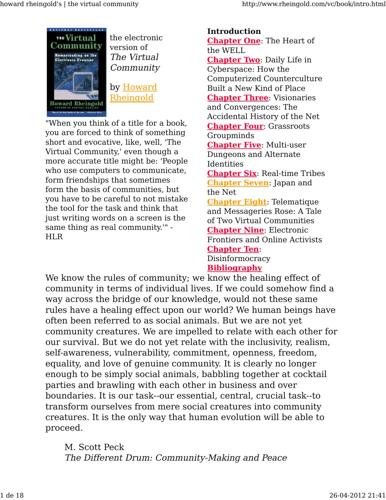
Howard Rheingold
by
The Virtual Community Homesteading on the Electronic Frontier-Perseus Books (1993)
Published 26 Apr 2012
Brand had been part of the faculty at an online institute devoted 26-04-2012 21:42 howard rheingold's | the virtual community 4 de 27 http://www.rheingold.com/vc/book/2.html to stretching the imaginations of business leaders--the Western Behavioral Sciences Institute (WBSI)--which introduced him to the effectiveness of computer conferencing. WBSI was also where he connected with Larry Brilliant. Brilliant and Brand shared a history at the center of several of the most colorful events of the 1960s: Brand was "on the bus" with Ken Kesey and the Merry Pranksters (Kesey's pot bust, as described in Tom Wolfe's Electric Kool-Aid Acid Test, happened on the roof of Brand's apartment; Brand was one of the organizers of the seminal Trips Festival that gave birth to Bill Graham Presents and the whole rock concert scene). Brilliant had been part of the Prankster-affiliated commune, the Hog Farm (which had organized the security arrangements for Woodstock around the judicious use of cream pies and seltzer bottles and had whipped up "breakfast in bed for 400,000").

San Francisco
by
Lonely Planet
➡ San Francisco Stories: Great Writers on the City (edited by John Miller) One hundred and fifty years of San Francisco impressions, including Jack London’s 1906 earthquake reports and Jack Kerouac’s attempts to hold a Downtown day job. ➡ Hell’s Angels: A Strange and Terrible Saga (Hunter S Thompson) This spare-no-details account of the outlaw Bay Area motorcycle club invented gonzo journalism and scandalized the nation. ➡ The Electric Kool-Aid Acid Test (Tom Wolfe) His florid style seems dated, but Wolfe had extraordinary presence of mind to capture the ’60s with Ken Kesey, the Merry Pranksters, the Grateful Dead and Hell’s Angels. ➡ Martin Eden (Jack London) San Francisco’s first literary star started out as the Prince of the Oyster Pirates, a waterfront bad boy who got by on his wits in this semi-autobiographical account.

The Rise and Fall of the Neoliberal Order: America and the World in the Free Market Era
by
Gary Gerstle
Published 14 Oct 2022
Bernstein, ed., Towards a New Past: Dissenting Essays in American History (New York: Pantheon, 1968), 263–288; Martin Sklar, The Corporate Reconstruction of American Capitalism, 1890–1916: The Market, the Law, and Politics (New York: Cambridge University Press, 1988). 67.On Kesey and the Merry Pranksters, see Tom Wolfe, The Electric Kool-Aid Acid Test (1968; New York: Bantam Books, 1969). 68.Stewart Brand, Whole Earth Catalog, 1st ed. (Menlo Park, CA: Portola Institute, 1968). 69.Anna Wiener, “The Complicated Legacy of Stewart Brand’s ‘Whole Earth Catalog,’ ” New Yorker, November 16, 2018, https://www.newyorker.com/news/letter-from-silicon-valley/the-complicated-legacy-of-stewart-brands-whole-earth-catalog, accessed April 10, 2021; Fred Turner, From Counterculture to Cyberculture: Stewart Brand, the Whole Earth Catalogue, and the Rise of Digital Utopianism (Chicago, IL: University of Chicago Press, 2006), 61–62; Margaret O’Mara, The Code: Silicon Valley and the Remaking of America (New York: Penguin Press, 2019).
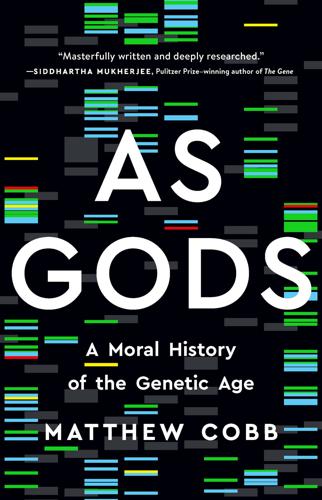
As Gods: A Moral History of the Genetic Age
by
Matthew Cobb
Published 15 Nov 2022
The subsequent decline happened at exactly the same time as the three threatening areas of genetic engineering that impelled me to write this book – heritable human genetic engineering, gene drives and gain-of-function research on dangerous pathogens – were emerging. We seem to have dropped our guard. Footnotes i Brand appears in the opening paragraphs of another iconic late-1960s book, Tom Wolfe’s The Electric Kool-Aid Acid Test (1968). Brand was one of Ken Kesey’s band of Merry Pranksters. ii Among the investors were the billionaire executive producer of Jurassic World and the celebrity Paris Hilton. That might sound a lot of money but given the scale of what is being attempted it is peanuts. Being a mammoth involved so much more than simply resisting cold – all the foraging behaviours, responses to the smell of food deep beneath the snow, and so on, would also have to be in place.

San Francisco
by
Lonely Planet
➡ San Francisco Stories: Great Writers on the City (edited by John Miller) One hundred and fifty years of San Francisco impressions, including Jack London’s 1906 earthquake reports and Jack Kerouac’s attempts to hold a Downtown day job. ➡ Hell’s Angels: A Strange and Terrible Saga (Hunter S Thompson) This spare-no-details account of the outlaw Bay Area motorcycle club invented gonzo journalism and scandalized the nation. ➡ The Electric Kool-Aid Acid Test (Tom Wolfe) His florid style seems dated, but Wolfe had extraordinary presence of mind to capture the ’60s with Ken Kesey, the Merry Pranksters, the Grateful Dead and Hell’s Angels. ➡ Martin Eden (Jack London) San Francisco’s first literary star started out as the Prince of the Oyster Pirates, a waterfront bad boy who got by on his wits in this semi-autobiographical account.
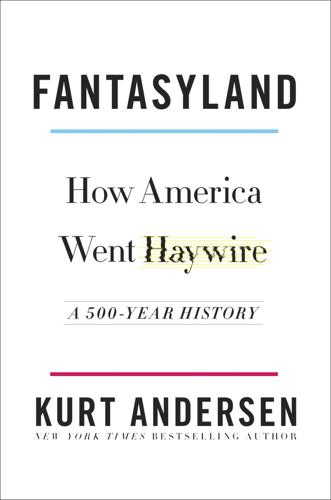
Fantasyland: How America Went Haywire: A 500-Year History
by
Kurt Andersen
Published 4 Sep 2017
Americans’ rate of lifetime use of cannabis is two or three or four times that of northern Europeans. For many people, drugs’ fantasy-encouraging effects extend beyond the minutes or hours of being high, leaching into everyday thought, not always usefully. — THE GREAT CONTEMPORANEOUS firsthand account of this 1960s, I think, is The Electric Kool-Aid Acid Test, Tom Wolfe’s book about Kesey and his acid-dropping Merry Prankster adventures. Eight years later, in the mid-1970s, as the Big Bang of subjectivity and hedonism blasted its new elements and energies through the American universe, Wolfe memorialized the larger transformation. He wrote an essay in New York magazine that’s remembered today for coining a term, the Me Decade, still used as a catchphrase for the touchy-feely narcissism of the 1970s’ newfangled self-improvement schemes.
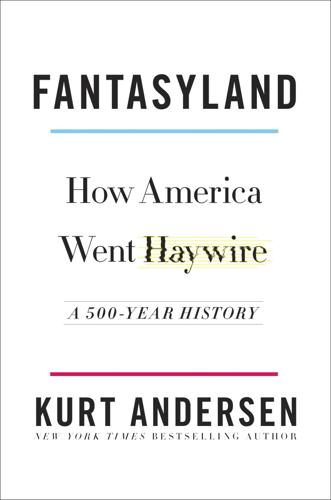
Fantasyland
by
Kurt Andersen
Published 5 Sep 2017
Americans’ rate of lifetime use of cannabis is two or three or four times that of northern Europeans. For many people, drugs’ fantasy-encouraging effects extend beyond the minutes or hours of being high, leaching into everyday thought, not always usefully. — THE GREAT CONTEMPORANEOUS firsthand account of this 1960s, I think, is The Electric Kool-Aid Acid Test, Tom Wolfe’s book about Kesey and his acid-dropping Merry Prankster adventures. Eight years later, in the mid-1970s, as the Big Bang of subjectivity and hedonism blasted its new elements and energies through the American universe, Wolfe memorialized the larger transformation. He wrote an essay in New York magazine that’s remembered today for coining a term, the Me Decade, still used as a catchphrase for the touchy-feely narcissism of the 1970s’ newfangled self-improvement schemes.
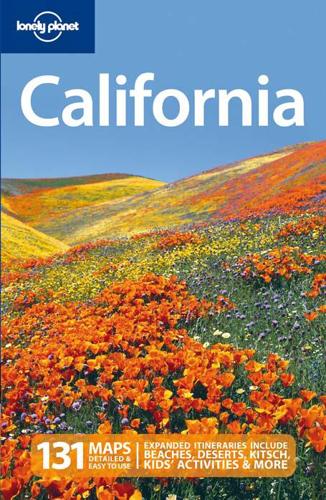
California
by
Sara Benson
Published 15 Oct 2010
Woman Warrior: Memoirs of a Girlhood Among Ghosts (Maxine Hong Kingston) A memoir of growing up Chinese American in Stockton, reflecting the shattered mirror of Californian identity. Slouching Towards Bethlehem (Joan Didion) These 1968 essays burn through the hippie haze to reveal glassy-eyed teenage revolutionaries adrift in the summer of love. The Electric Kool-Aid Acid Test (Tom Wolfe) Follow Ken Kesey, the Merry Pranksters, the Grateful Dead and Hell’s Angels as they tune in, turn on and drop out. The Man in the High Castle (Philip K Dick) The bestselling Berkeley sci-fi writer presents the ultimate what-if scenario: imagine San Francisco circa 1962 if Japan and Nazi Germany had won WWII.
…
A mile in from San Gregorio State Beach on Hwy 1, kick off your shoes and stomp your feet to live bluegrass, Celtic and folk music on the weekends at the landmark San Gregorio General Store ( 650-726-0565), and check out the wooden bar singed by area branding irons. Eight miles east is the tiny township of La Honda, former home to One Flew Over the Cuckoo’s Nest author Ken Kesey, and the launching spot for his 1964 psychedelic bus trip immortalized in Tom Wolfe’s The Electric Kool-Aid Acid Test. Housed in an old blacksmith’s shop, Apple Jack’s Inn ( 650-747-0331) is a rustic, down-home bar offering live music on weekends and lots of local color. * * * South of the lighthouse, Fitzgerald Marine Reserve ( 650-363-4020) at Moss Beach is an extensive area of natural tidal pools.
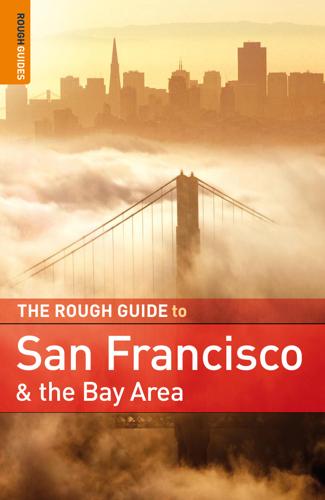
Rough Guide to San Francisco and the Bay Area
by
Nick Edwards
and
Mark Ellwood
Published 2 Jan 2009
Ken Kesey came here from Oregon in 1958 on a writing fellowship, working nights as an orderly on the psychiatric ward of one local hospital, and getting paid $75 a day to test experimental drugs (LSD among them) in another. Drawing on both experiences, Kesey wrote One Flew over the Cuckoo’s Nest in 1960 and quickly became a counter-culture hero, a period admirably chronicled by Tom Wolfe in The Electric Kool-Aid Acid Test. Approaching from the Palo Alto CalTrain and SamTrans bus station, which acts as a buffer between the town and the university, the campus is entered via a half-mile-long, palm-tree-lined boulevard that deposits you at its heart, the Quadrangle, bordered by the phallic Hoover Tower, whose observation platform (daily 10am–4.30pm; $2) is worth ascending to for the view, and the colorful gold-leaf mosaics of the Memorial Church.
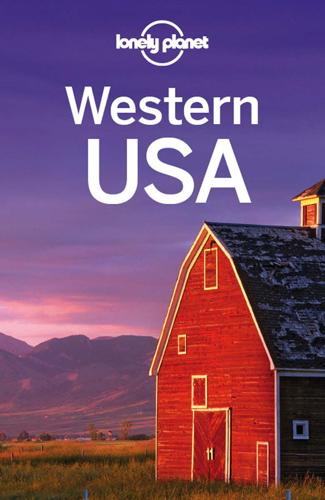
Western USA
by
Lonely Planet
Based in San Francisco, the scene revolved around Jack Kerouac (On the Road), Allen Ginsberg (Howl) and Lawrence Ferlinghetti, the Beats’ patron and publisher. Joan Didion nailed contemporary California culture in Slouching Towards Bethlehem, a collection of essays that takes a caustic look at 1960s flower power and the Haight-Ashbury district. Tom Wolfe also put ’60s San Francisco in perspective with The Electric Kool-Aid Acid Test, which follows Ken Kesey’s band of Merry Pranksters. In the 1970s, Charles Bukowski’s semi-autobiographical novel Post Office captured down-and-out downtown LA, while Richard Vasquez’s Chicano took a dramatic look at LA’s Latino barrio. Hunter S Thompson, who committed suicide in early 2005, wrote Fear and Loathing in Las Vegas, set in the temple of American excess in the desert; it’s the ultimate road-trip novel, in every sense of the word.
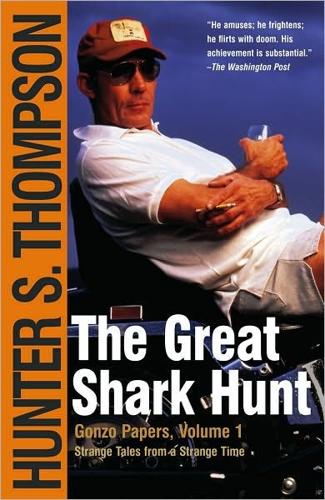
The Great Shark Hunt: Strange Tales From a Strange Time
by
Hunter S. Thompson
Published 6 Nov 2003
Mentions Thompson's review of The Spire (NO, April 27, 1964 p. 16) "In and Out of Books," Lewis Nichols, The New York Times Book Review, March 5, 1967, p. 8. Brief discussion of Thompson's trip to NYC to promote Hell's Angels. "Thompson, Hunter," Contemporary Authors, Detroit: Gale, 1968, v. 19-20, p. 429-30. Standard bio. The Electric Kool-Aid Acid Test, Tom Wolfe, New York: Bantam, 1969. 700 Chapter 13: The Hell's Angels pp. 150-51. Describes how Ken Kesey met the Angels through Thompson. " 'Freak Power' Candidate May Be the Next Sheriff in Placid Aspen, Colorado," Anthony Ripley, photo by David Hiser, The New York Times, October 19, 1970, p. 44.
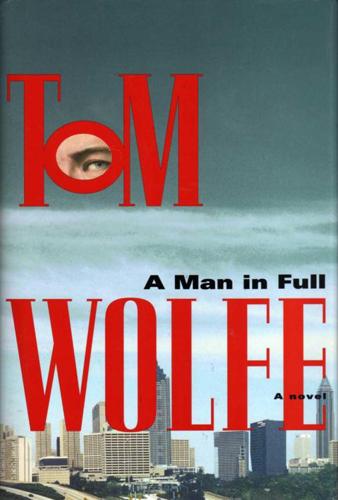
A Man in Full: A Novel
by
Tom Wolfe
Published 31 Mar 2010
"You can't leave without saying goodbye!" she said. "Wouldn't think of it," said Roger, "and thanks for everything." "Don't forget where we are, now!" "Oh, don't worry," said the man of the world, "I'll be back." About the Author Tom Wolfe is the author of a dozen books, among them such contemporary classics as The Electric Kool-Aid Acid Test, The Right Stuff, and The Bonfire of the Vanities, A native of Richmond, Virginia, he earned his B.A. at Washington and Lee University and his Ph.D. in American studies at Yale. He lives in New York City. BY HRUNDI, IF YOU EVER PROOF THIS BOOK PLEASE LET ME KNOW; I’M ON THE EBOOKS CHANNEL Proofed by ansdell sept 09 ( I was scanning this book but you got there first) YOU CAN SEARCH THROUGH THE WHOLE BOOK ON BARNES AND NOBLE IF YOU’RE NOT SURE ABOUT A PARTICULAR WORD www.barnesandnoble.com <http://www.barnesandnoble.com> Table of Contents Table of Contents Untitled Untitled Untitled Untitled Table of Contents Table of Contents Untitled Untitled Untitled Untitled Table of Contents Table of Contents Untitled Untitled Untitled Untitled

Northern California Travel Guide
by
Lonely Planet
A mile in from San Gregorio State Beach ( GOOGLE MAP ; %650-726-8819; www.parks.ca.gov; Hwy 1, San Gregorio; per car $8; h8am-sunset) on Hwy 1, kick off your shoes and stomp your feet to live bluegrass, Celtic and folk music on the weekends at the San Gregorio General Store ( GOOGLE MAP ; %650-726-0565; www.sangregoriostore.com; 7615 Stage Rd, San Gregorio; hstore 10:30am-6pm Sun-Thu, to 7pm Fri, 10am-7pm Sat, to 6pm Sun). Check out the wooden bar singed by area branding irons. Eight miles further east is the tiny township of La Honda, former home to One Flew Over the Cuckoo’s Nest author Ken Kesey and the launching spot for his 1964 psychedelic bus trip immortalized in Tom Wolfe’s The Electric Kool-Aid Acid Test. Housed in a 19th-century blacksmith’s shop, Apple Jack’s ( GOOGLE MAP ; %650-747-0331; 8790 Hwy 84, La Honda; hnoon-2am) is a rustic, down-home country-and-western bar with motorcycles lined up in a row outside. To stretch your legs in the redwoods, Sam McDonald County Park ( GOOGLE MAP ; %650-879-0238; http://parks.smcgov.org/sam-mcdonald-park; 13435 Pescadero Creek Rd, Loma Mar; per car $6; h8am-8pm Apr-Aug, closes earlier Sep-Mar; pc), 2 miles south of La Honda, has forested hiking trails and a secluded hike-to cabin ( GOOGLE MAP ; %650-390-8411; www.sierraclub.org/loma-prieta/hikers-hut; per night adult $20-30, child $10; n).
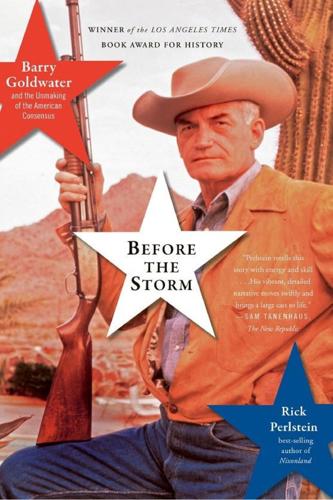
Before the Storm: Barry Goldwater and the Unmaking of the American Consensus
by
Rick Perlstein
Published 17 Mar 2009
Buckley: Gregory Schneider, Cadres for Conservatism: Young Americans for Freedom and the Rise of the Contemporary Right (New York: NYU Press, 1999), 81-82; and WP, July 12, 1964. Eisenhower: CBS News special, MTR, T78:0I43. Scranton and BMG followed by chants: AHFCP, vol. I, picture 14. 372 For “Merry Pranksters,” see Tom Wolfe, The Electric Kool-Aid Acid Test (New York: Farrar, Straus and Giroux, 1968). For North Beach and “Eisenhower Sway,” see William J. Miller, Henry Cabot Lodge: A Biography (New York: Heineman, 1967), 368; and WP, July 12, 1964. Dick Gregory: author interview with Jameson Campaigne Jr.; and Newsweek, July 20, 1964. 372 For Der Spiegel, see WSJ.

Central America
by
Carolyn McCarthy
,
Greg Benchwick
,
Joshua Samuel Brown
,
Alex Egerton
,
Matthew Firestone
,
Kevin Raub
,
Tom Spurling
and
Lucas Vidgen
Published 2 Jan 2001
It usually is just open on Wednesday and Friday nights. Lone travelers should take care at night, since the pathway to the bar is unlit. Treetanic ( 8pm-midnight, to 1am Wed & Fri) Drinking at this psychedelic mango treetop bar feels a bit guilty, like drinking inside a children’s pop-up book, if the pop-up book was The Electric Kool-Aid Acid Test, of course. You half expect to find Willy Wonka tending bar. It ranked number four in Singha and Lonely Planet’s 2009 Great Bars of the World. Tranquila Bar ( 4pm-1am Sun-Thu, to 3am Fri & Sat) Jutting out on a small jetty, this is a relaxed place to swap dive tales and travel stories.
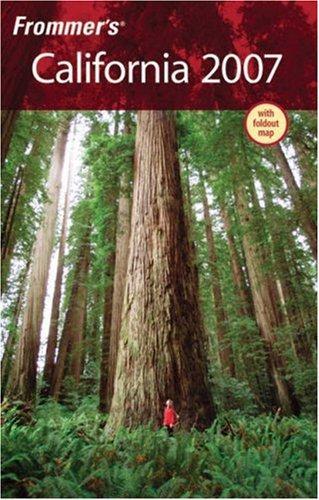
Frommer's California 2007
by
Harry Basch
,
Mark Hiss
,
Erika Lenkert
and
Matthew Richard Poole
Published 6 Dec 2006
Joan Didion, in her novel Slouching Towards Bethlehem, and Hunter S. Thompson, in his columns for the San Francisco Examiner (brought together in the collection Generation of Swine), both used a “new journalistic” approach in their studies of San Francisco in the 1960s. Tom Wolfe’s early work The Electric Kool-Aid Acid Test follows the Hell’s Angels, the Grateful Dead, and Ken Kesey’s Merry Pranksters as they ride through the hallucinogenic 1960s. Meanwhile, in “Howl” and On the Road, Beat writers Allen Ginsberg and Jack Kerouac, respectively, were penning protests against political conservatism— and promoting their bohemian lifestyle.